Highlights of Germany’s Neckar Valley and Black Forest Region: From Frankfurt to Freiburg
In September 2019, we traveled to southwestern Germany to attend a friend’s wedding. We visited Heidelburg, Freiburg Im Bresgau, Stuttgart, and Frankfurt, as well as Strasbourg in France near the border.
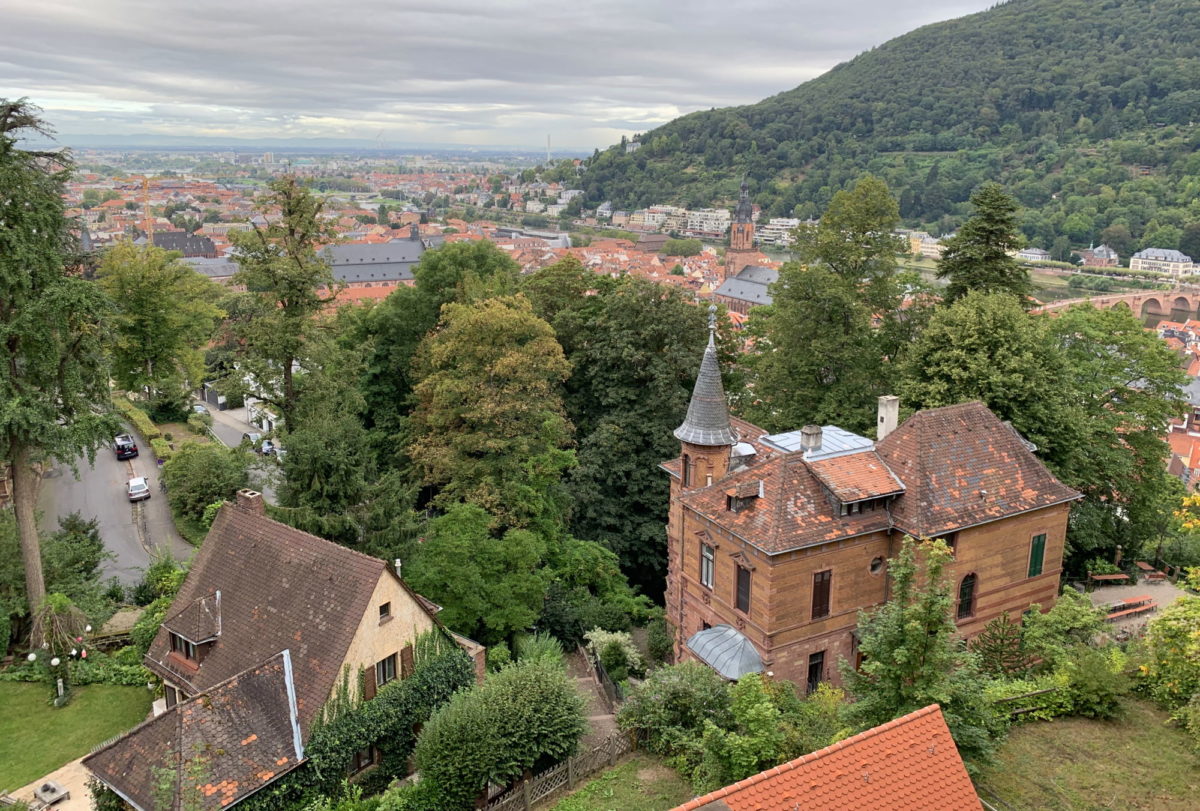
Due to how our schedule worked out, we had only about a day in each city. Here are the highlights!
Our Itinerary
Our journey would start in Frankfurt. From there, we’d spend a day in Heidelburg, before heading down to Freiburg im Bresgau for the wedding. There, we’d take a few day trips, then loop back through Stuttgart, then back to Frankfurt. We did all of our intercity travel by train or bus.
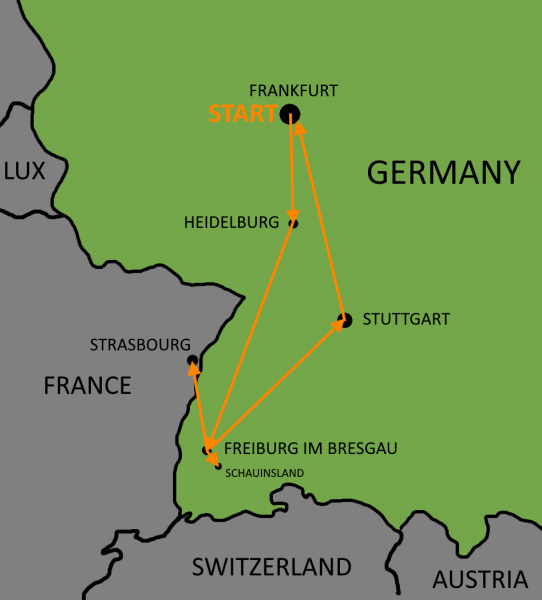
Heidelburg: The Castle and More
After we landed in Frankfurt, we boarded a train to the medieval town of Heidelburg, 89km to the south. We arrived in Heidelburg’s main train station or Hauptbahnhof about an hour later.
From there, it was a short cab ride to the old town or Altstadt, where our hotel was.
For this trip, we tried to book our hotels close to the main attractions (usually in the old part of the city), and we succeeded wonderfully with the Hotel Am Kornmarkt, located just a few blocks from the main marketplace (Marktplatz), but in a quiet square off the beaten path.
It was midday when we got there, so we dropped off our bags, fought the overwhelming urge to go to sleep, and vowed to walk off the jetlag, which was kind of brutal at this point.
A perfect way to do that was to hike the famous Philosopher’s Walk (Philosophenweg), a trail on the opposite side of the Neckar river with commanding views of the city. To get there, we passed under the Old Entrance, the Brückentor and crossed a bridge over the Neckar River.
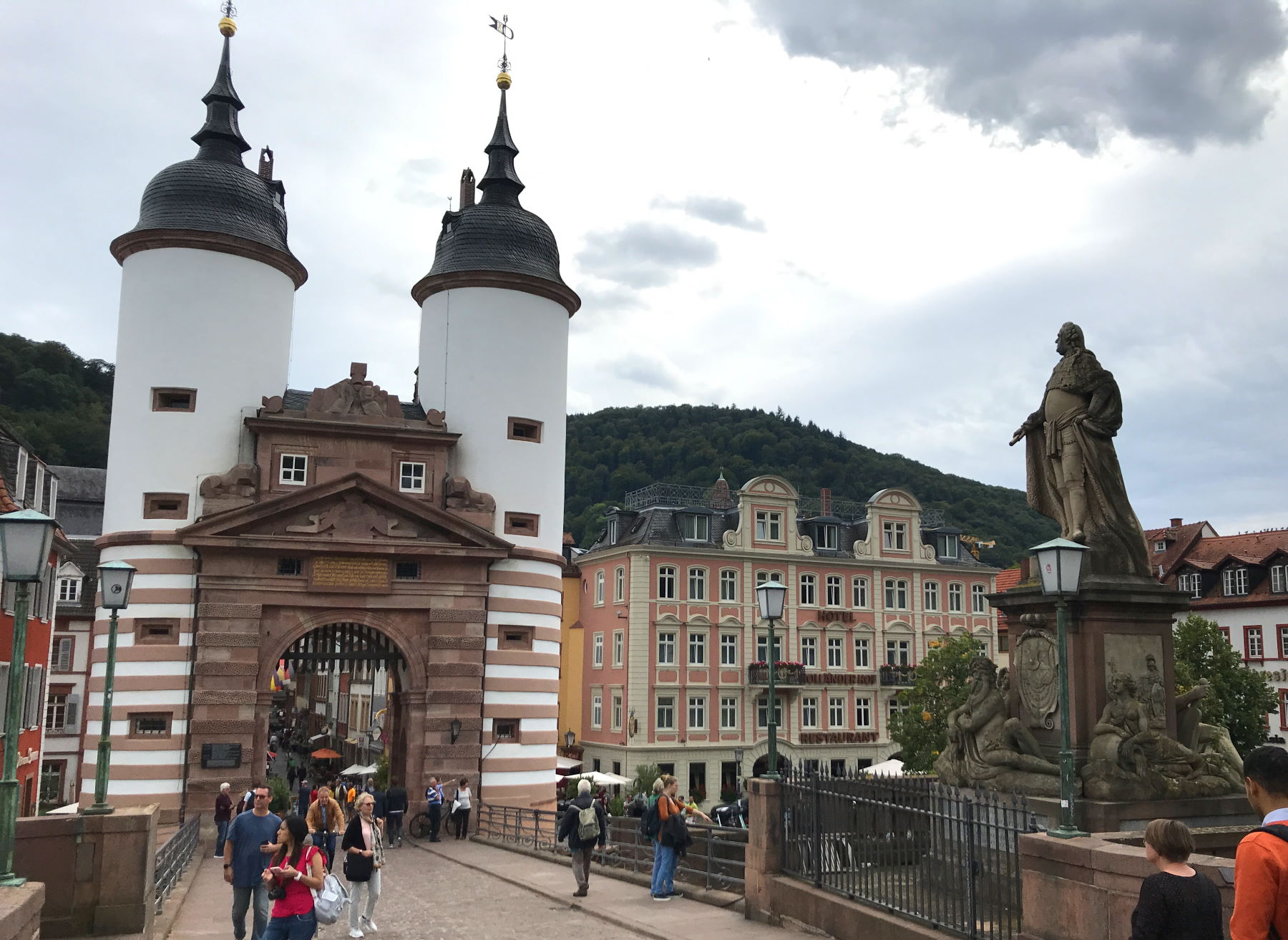
On the opposite side of the river, there was no marking for the path entrance, only a mysterious dark pathway, so it was a good thing we had taken a photo of the map!
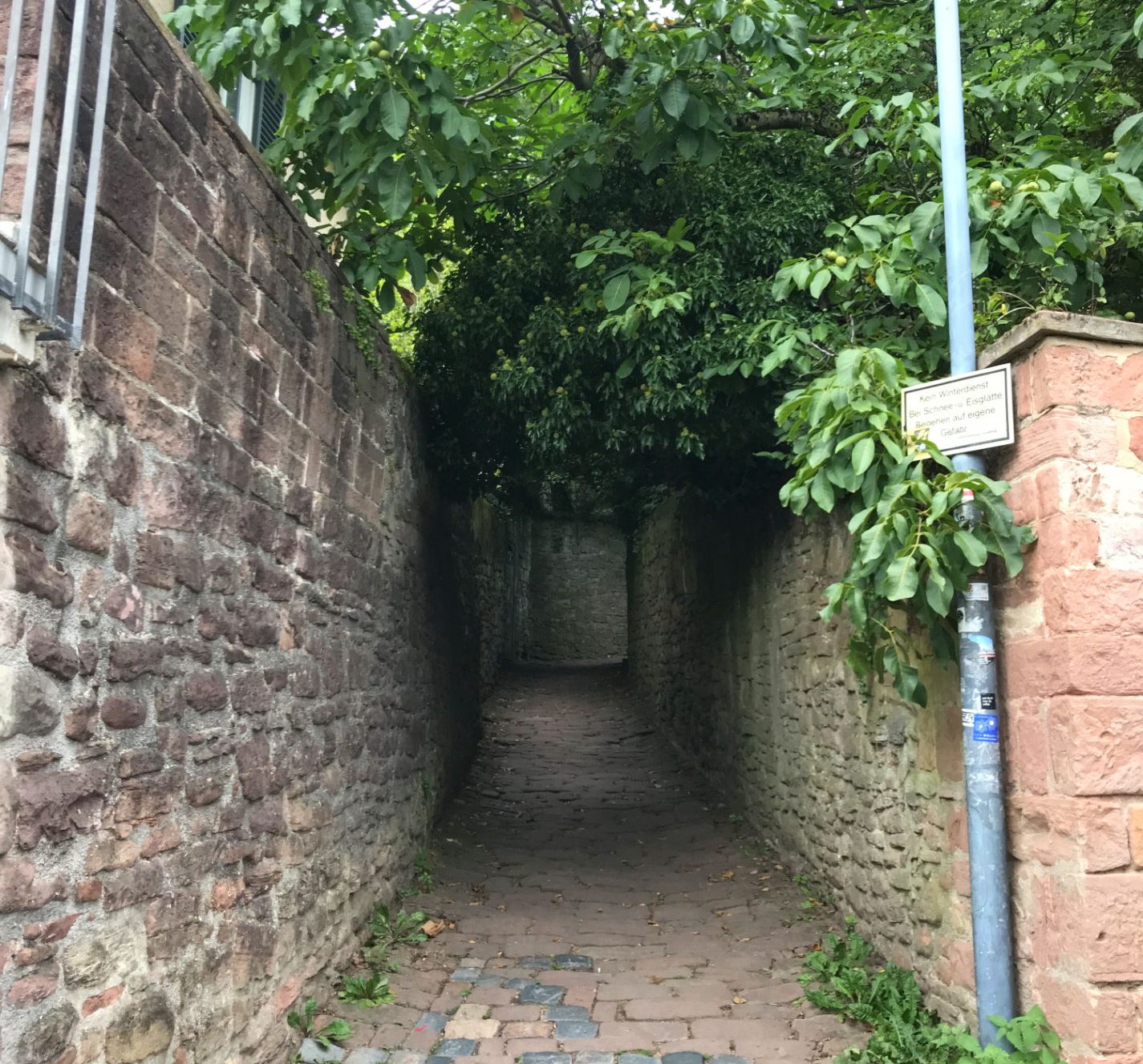
The first part was steep with high stone walls on either side. At the top, we were rewarded with an amazing view of the river and the Altstadt. We had a cool breeze that was exhilarating after being on the plane for eleven hours.
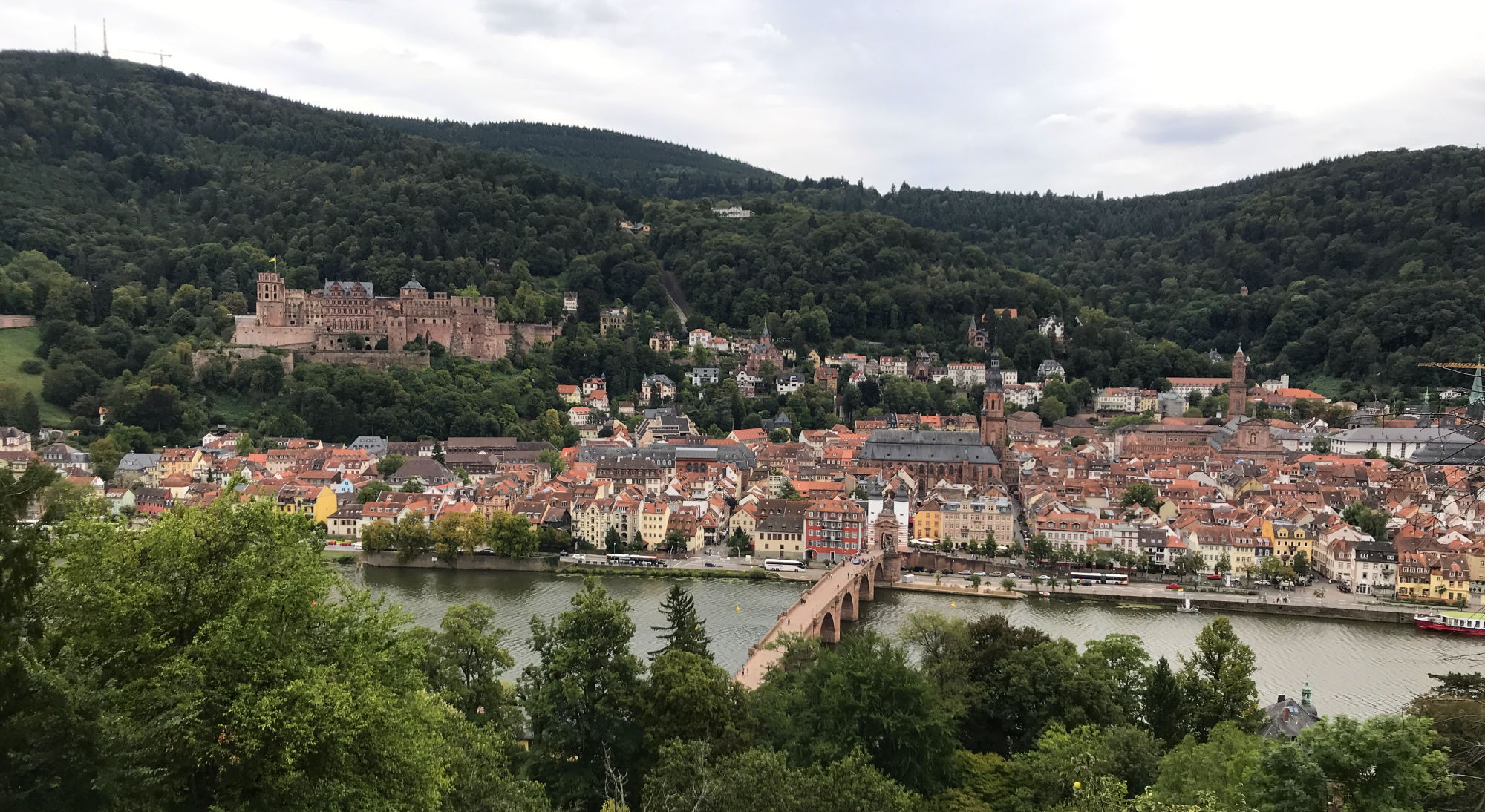
Next, we wandered the streets of the main marketplace (Marktplatz) and up the main shopping street (Hauptstraße). There, we found many charming shops and cafes.
For dinner, we had falafel at Mahmoud’s a small fast-food Middle Eastern restaurant, and I must say it was one of the best falafels I’ve had! Middle Eastern food is very popular in Germany and is usually a good bet, especially if you are vegetarian.
I think the total cost of dinner for two was about ten Euros! We were amazed at how inexpensive food was in Germany!
As we returned to our hotel, we had an amazing view of the square with the Heidelburg Castle (Heidelberger Schloss) in the background!
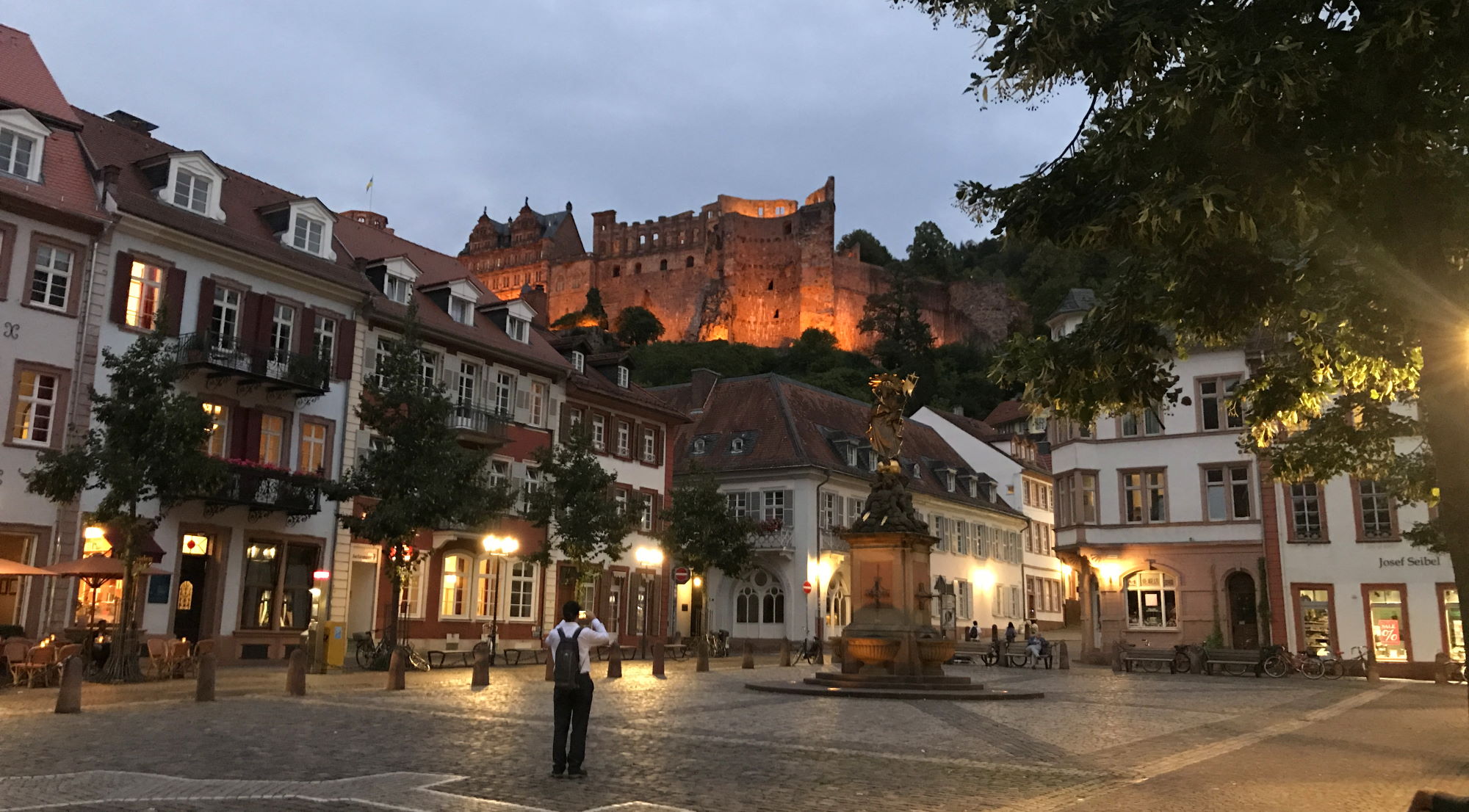
Of course, no trip to Germany would be complete without apple strudel (Apfelstrudel), which we had for breakfast the next morning (it was amazing).
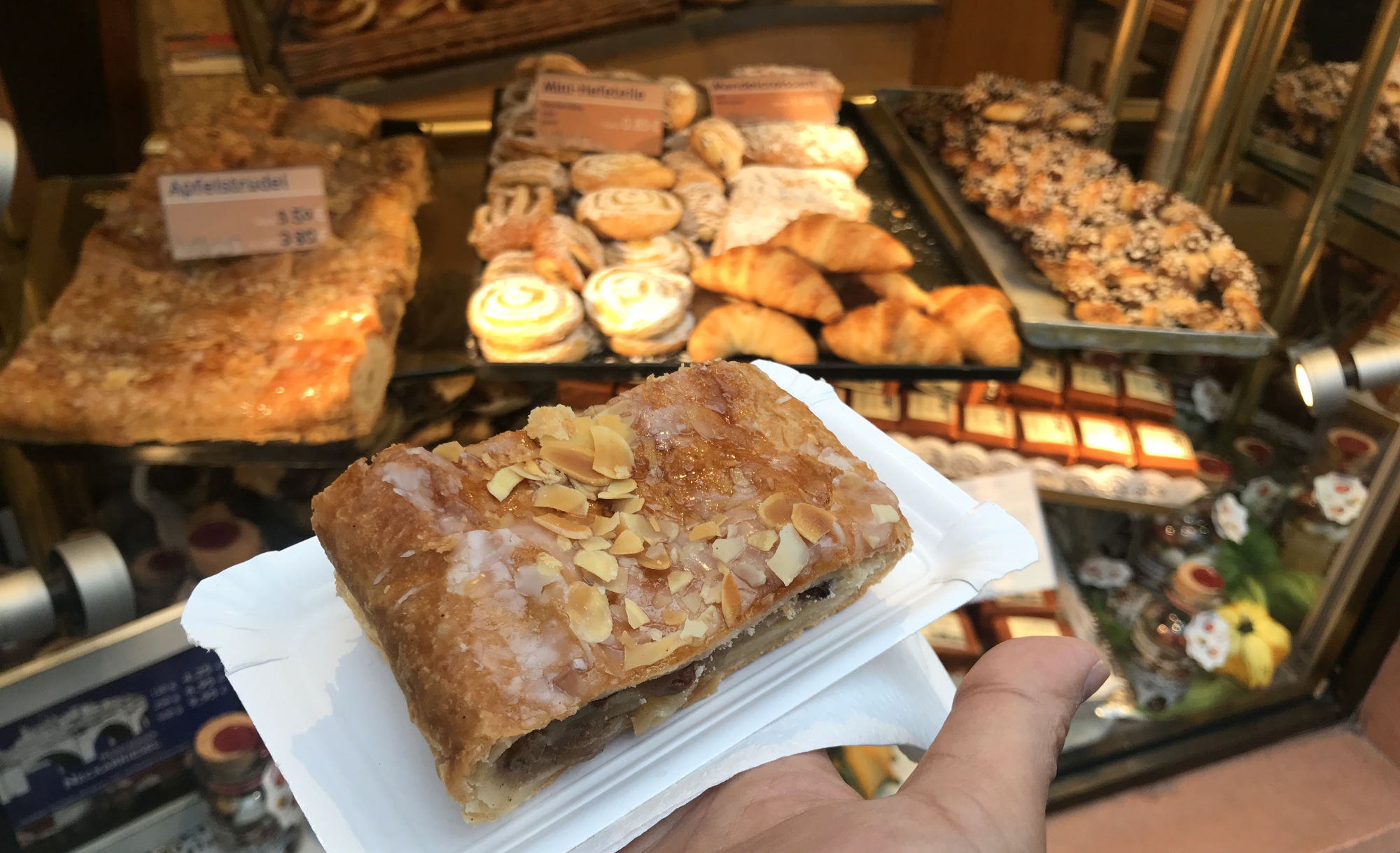
In general, we found the pastries in Germany to be not as sweet as their American counterparts, which was actually nice.
But, time was short because we had to check out Hedelburg’s main attraction, its castle. The entrance to the castle tram (Bergbahn) was just fifty yards from our hotel! We took the tram up and signed up for an English-language guided tour which I highly recommend.
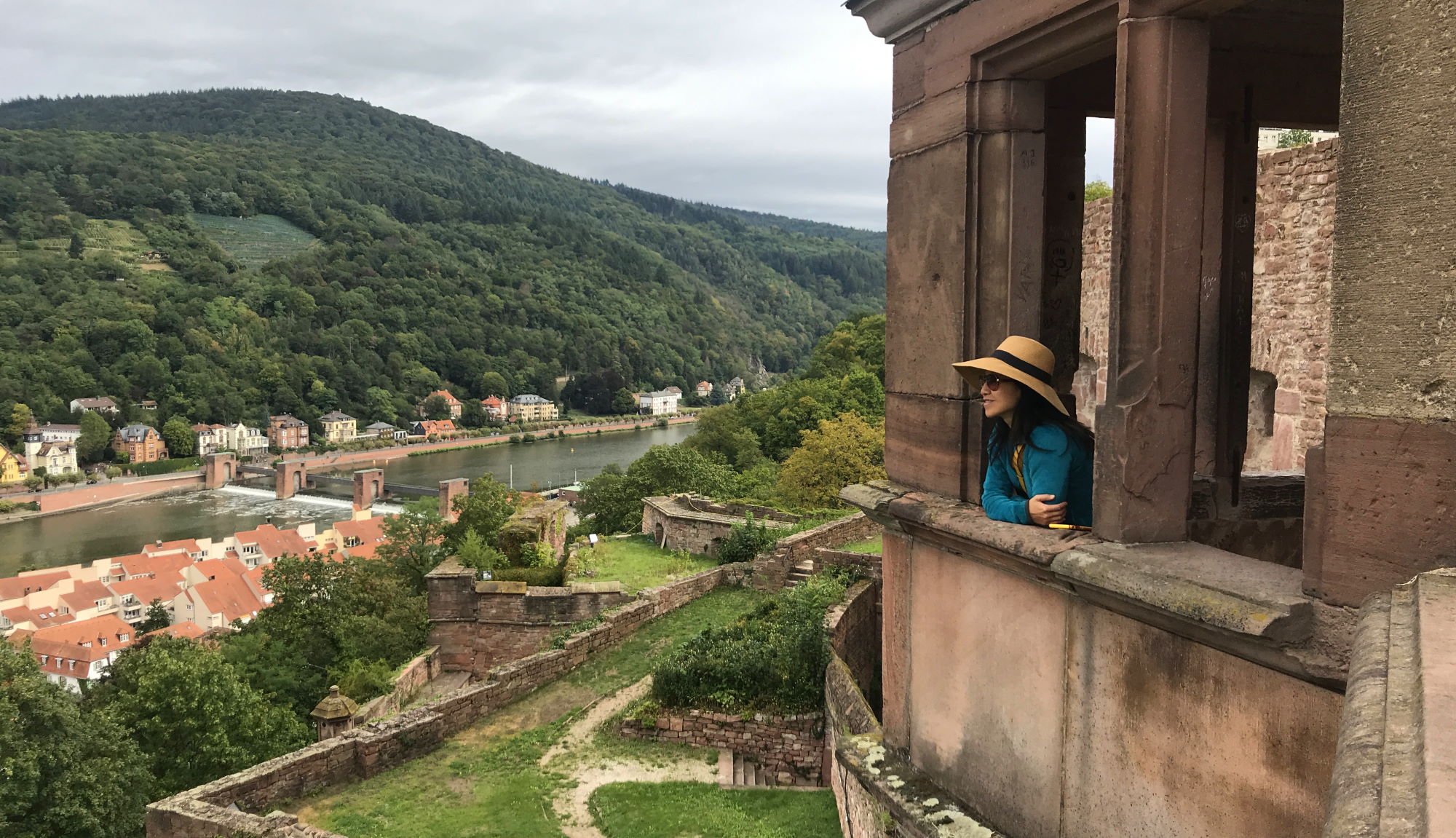
We learned that the castle started out as a small fort, and was later enlarged with a moat. Various kings built their residences here in different architectural styles before the French partially destroyed it (if most of their gunpowder had not gotten wet, they would have blown up all of it, our tour guide explained).
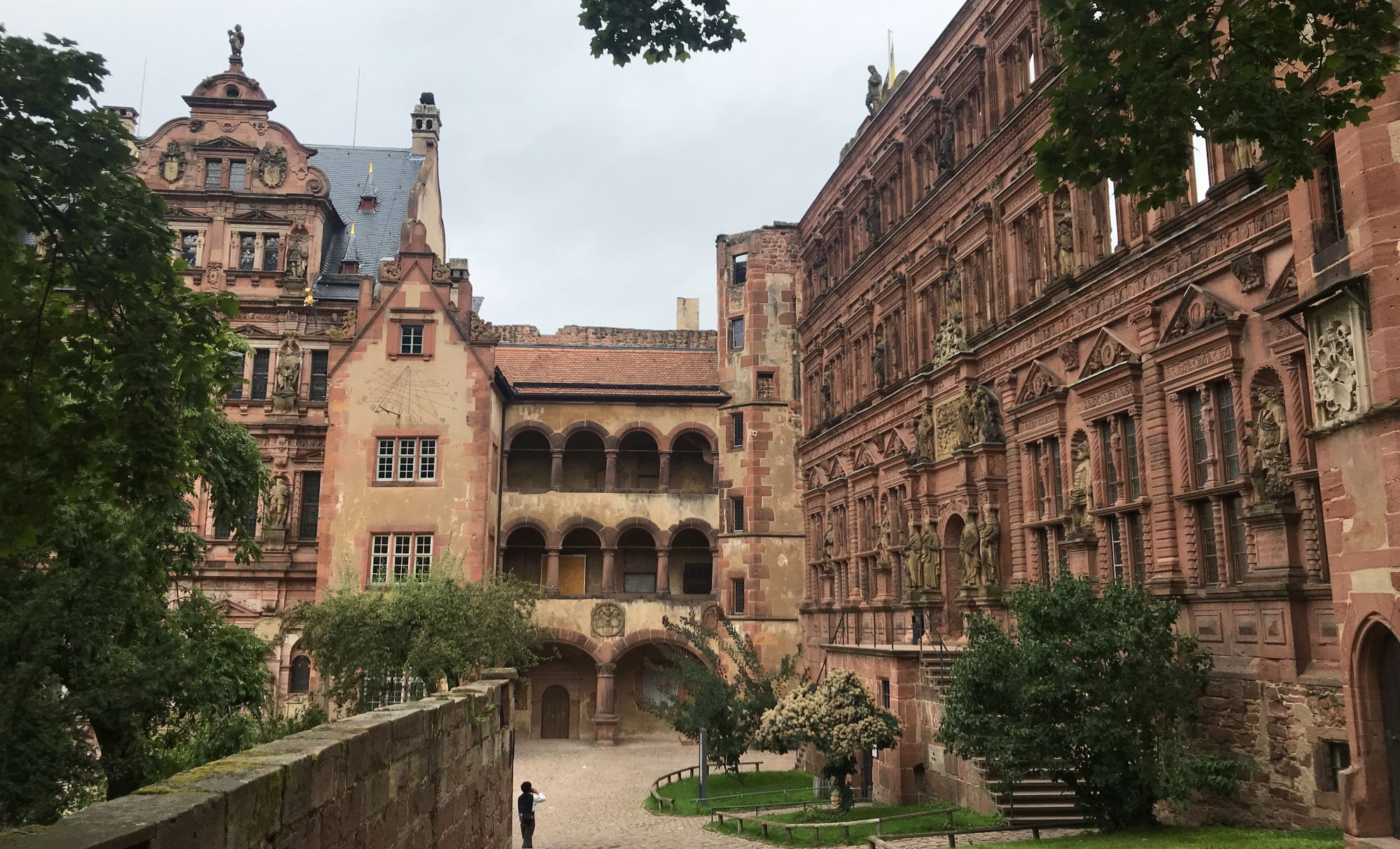
One prominent attraction is the “world’s largest wine barrel”, holding over 200,000 liters of wine, taken as a tax from ships passing through. I guess they just mixed it all together?

There was another tram that took us to the very top of the mountain to the Viewpoint Königstuhl, where we got our postcard photo of Heidelburg.

Unfortunately, we couldn’t stay long because we had to catch the train to our next destination: Freiburg. But, we could have easily stayed another day in Heidelburg and not run out of things to do.
Freiburg im Breisgau: Vibrant College Town Near the Black Forest
From Heidelburg, we took a two-and-a-half train journey south to Freiburg im Breisgau, a university town near the Black Forest. We stayed at Motel One, a hip hotel chain in Germany, and again, right at the edge of the Altstadt.
Wandering the Altstadt, we found it just as charming as Heidelburg’s.
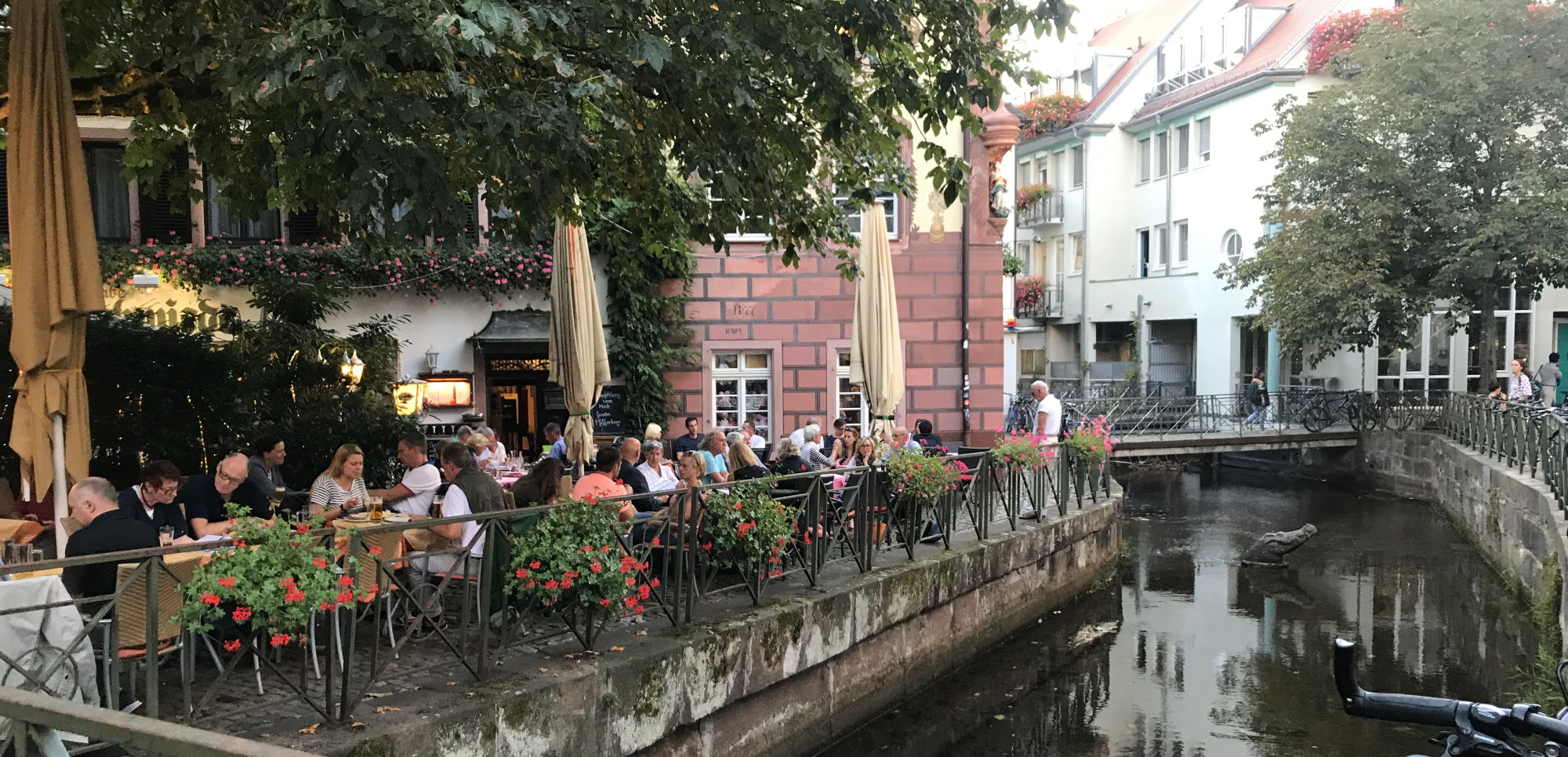
That evening we had dinner with the wedding party at a Biergarten, a “must-do” in Germany. Amusingly, my wife ordered a sausage salad (Wurstsalat), thinking it would be slices of sausage over lettuce, but it was all meat: think sausages and cheese extruded into noodles with salad dressing poured over. Welcome to Germany!
The next day we went on a Living History tour led by an actress portraying Catharina Stadellmenin, a widow who was accused of witchcraft and was tortured and executed. her portrayal was pretty emotional with the torture described in detail at times.
In those days, when something went wrong (like a bad harvest), people looked for a reason. Sometimes, women who didn’t conform to society’s norms were scapegoated. They were tortured and forced to name other women who were “guilty” of witchcraft, then executed.
After the powerful and somber tour, we spent the afternoon in the wonderful Münsterplatz Food Market, which happens every day except Sunday around the Freiburg Münster cathedral. It’s an outdoor food market and farmer’s market.
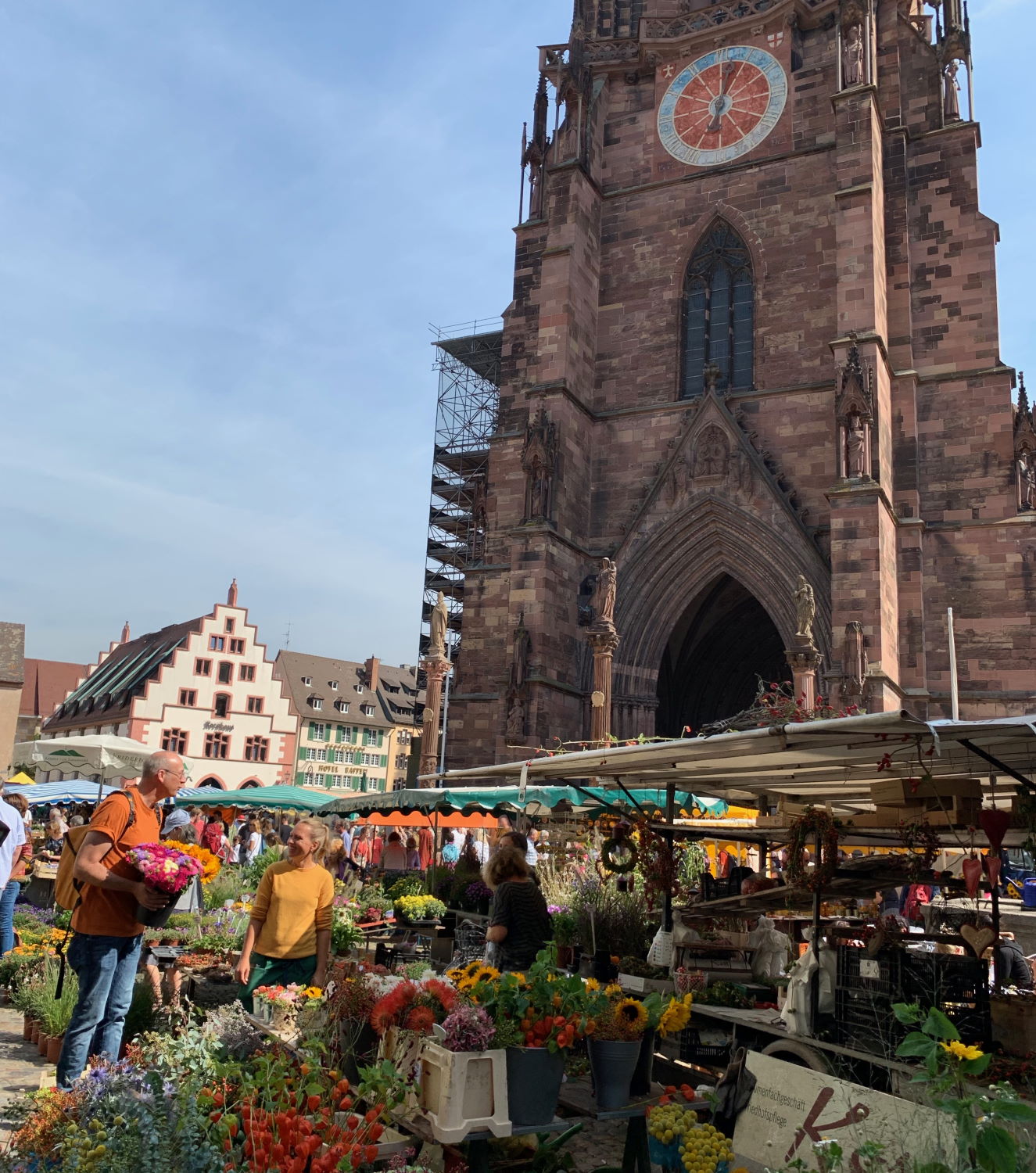
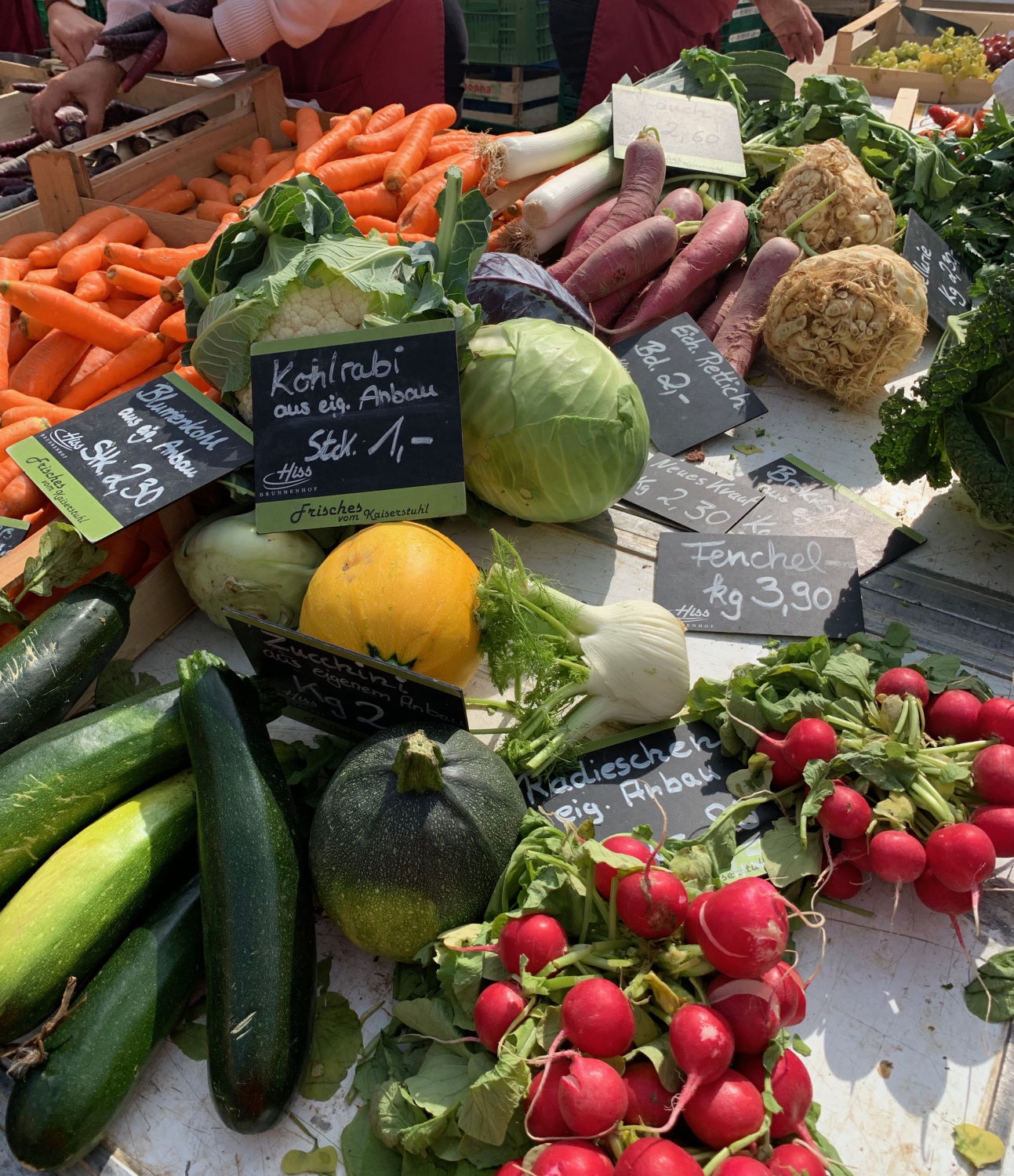
We found wonderful flowers, fresh fruit, pressed juices, jams, and the regional Lange Rote, which was fantastic!
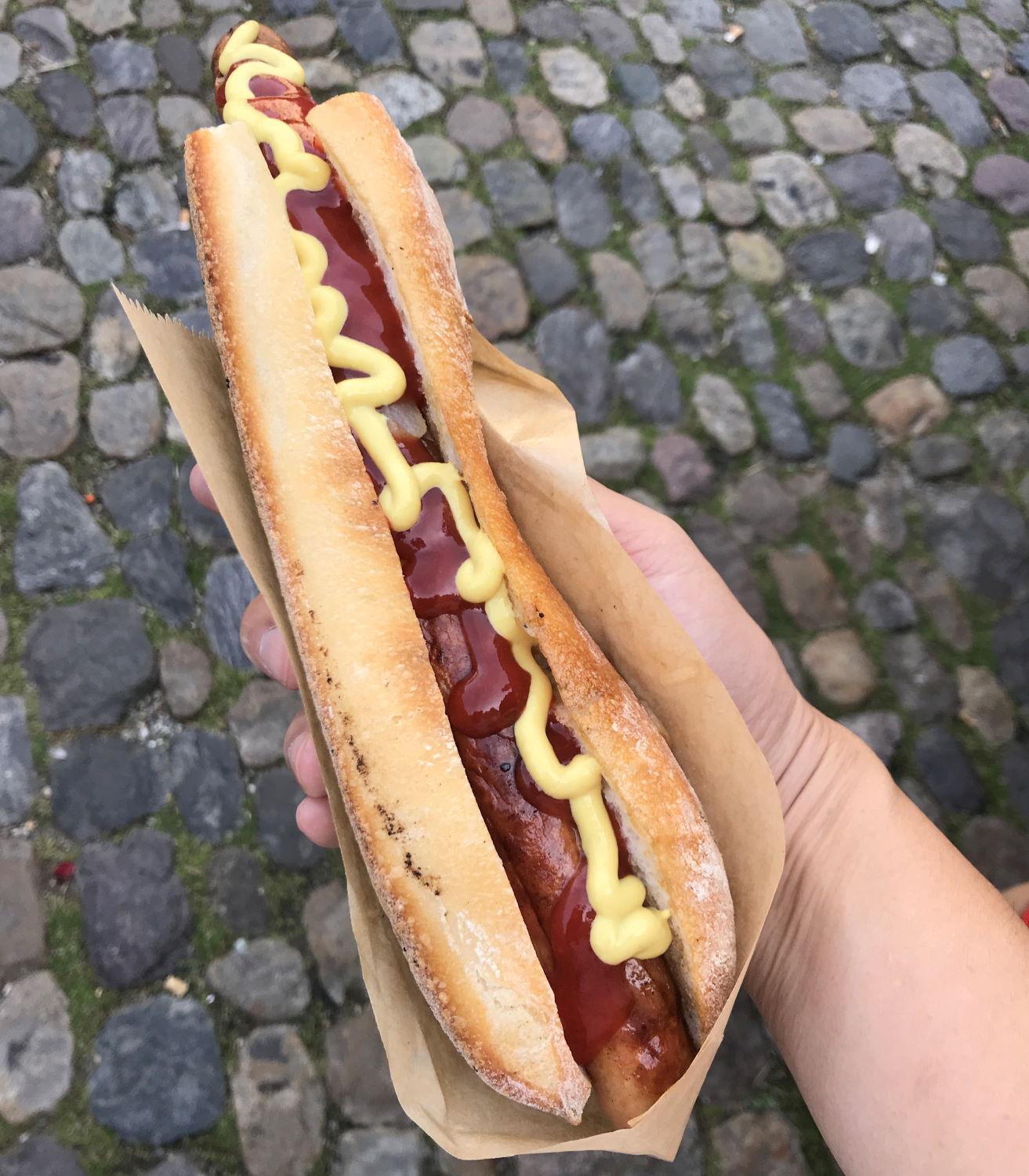
Because Freiburg is a college town, you’ll find quirky attractions like this marching brass band, playing old American Jazz standards!
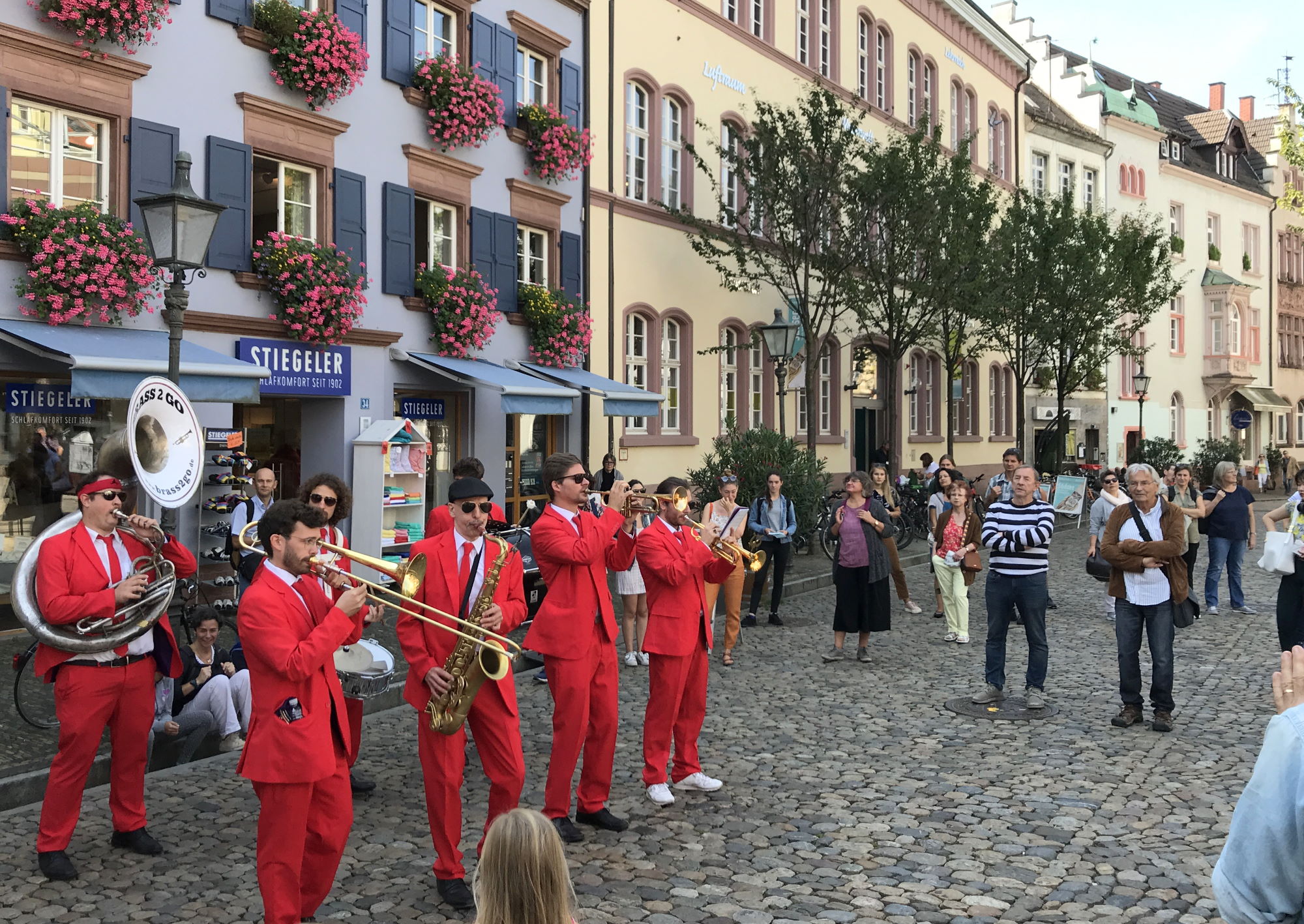
Afternoon at Schauinsland in the Black Forest
Freiburg was the one city on our trip that we had multiple days in, and we used one of them to visit the Black Forest (Schwartzwald). The next day we took a 30-minute bus ride, then a cable car up to Schauinsland, a lookout peak in the Black Forest not far from Freiburg.
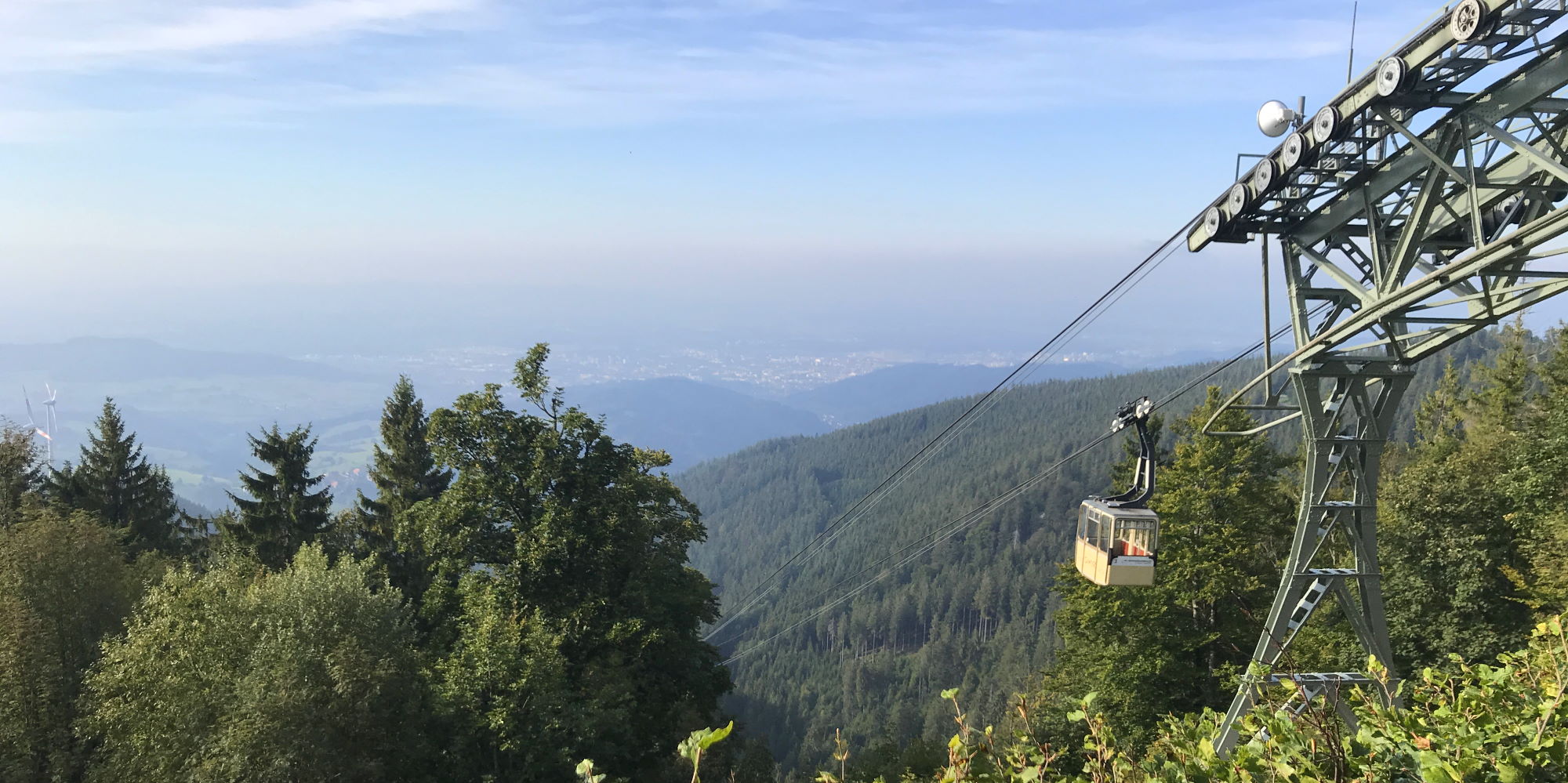
At the top, there is a restaurant where you can hang out with a beer. Or, you can take a short walk to an observation tower for even more spectacular views.
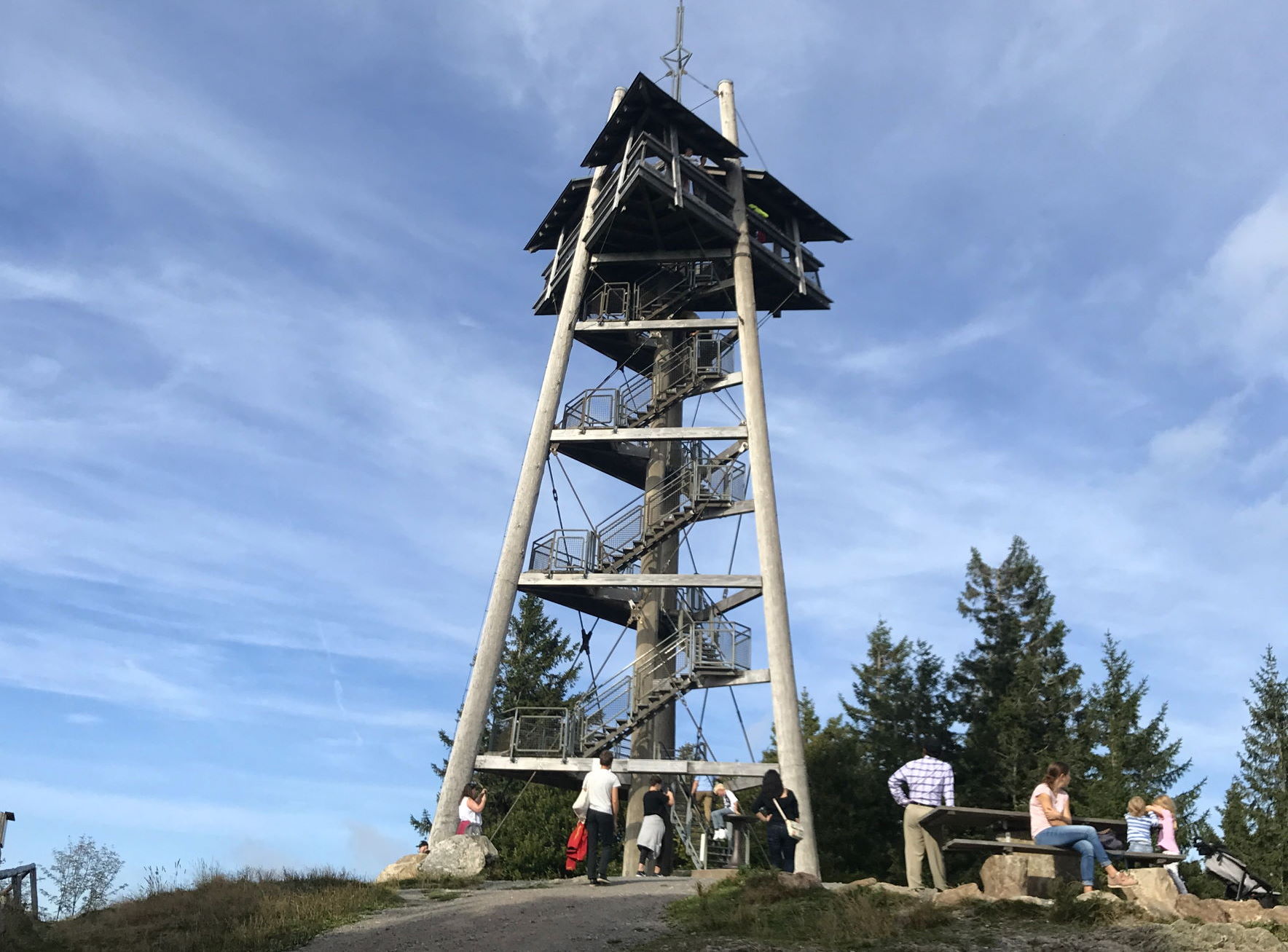
That night for dinner, we tasted some traditional regional dishes including Flammkuchen (very thin-crust pizza), Maltaschen (meat or other filling wrapped with a thin dough), and Spätzel noodles. I always recommend trying the local favorites!
Afternoon at the Gothic Cathédrale Notre-Dame in Strasbourg, France
The next day, we took a one-and-a-half-hour bus ride to visit Strasbourg, located in the Alsace region of France, which has changed hands with Germany several times over the years.
The city center is dominated by the spectacular Gothic Cathédrale Notre-Dame, with its 142-meter tall spire.
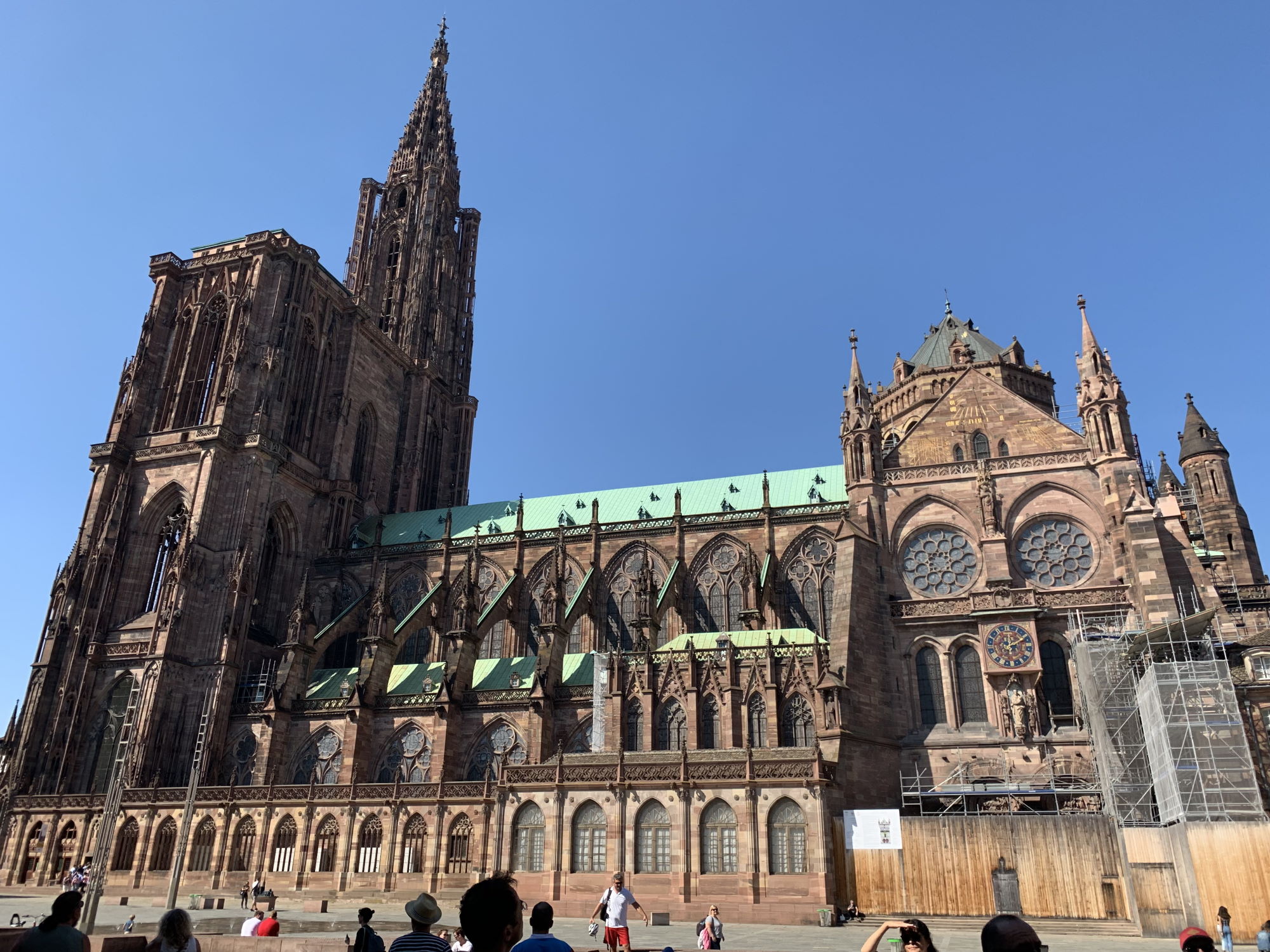
Entry is free, and we found the interior even more spectacular than the exterior, with its vast spaces and stained-glass windows.
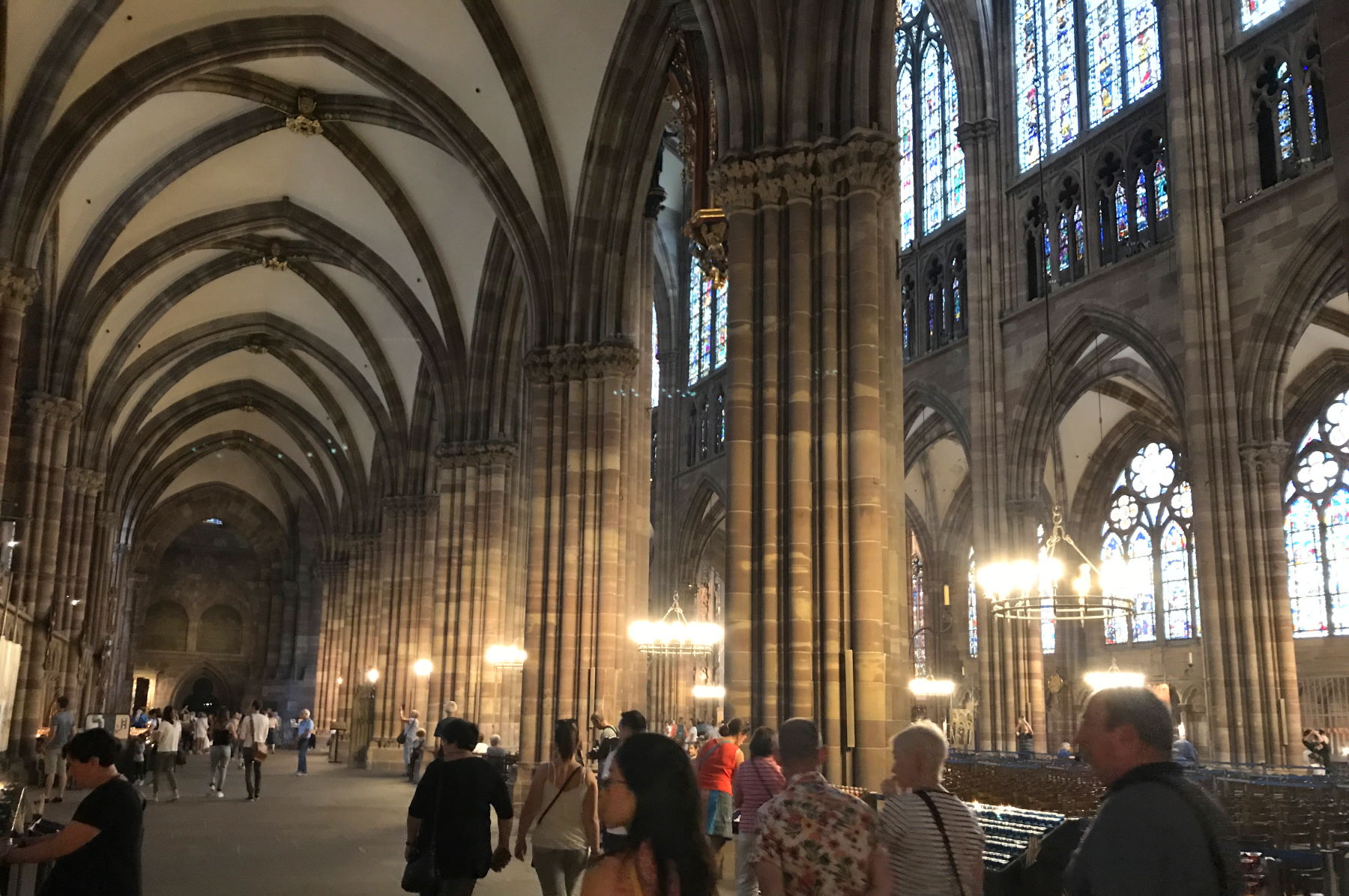
Notable inside the cathedral is the Strasbourg astronomical clock. The first was built in 1354. The one here is the third one, built in 1843.
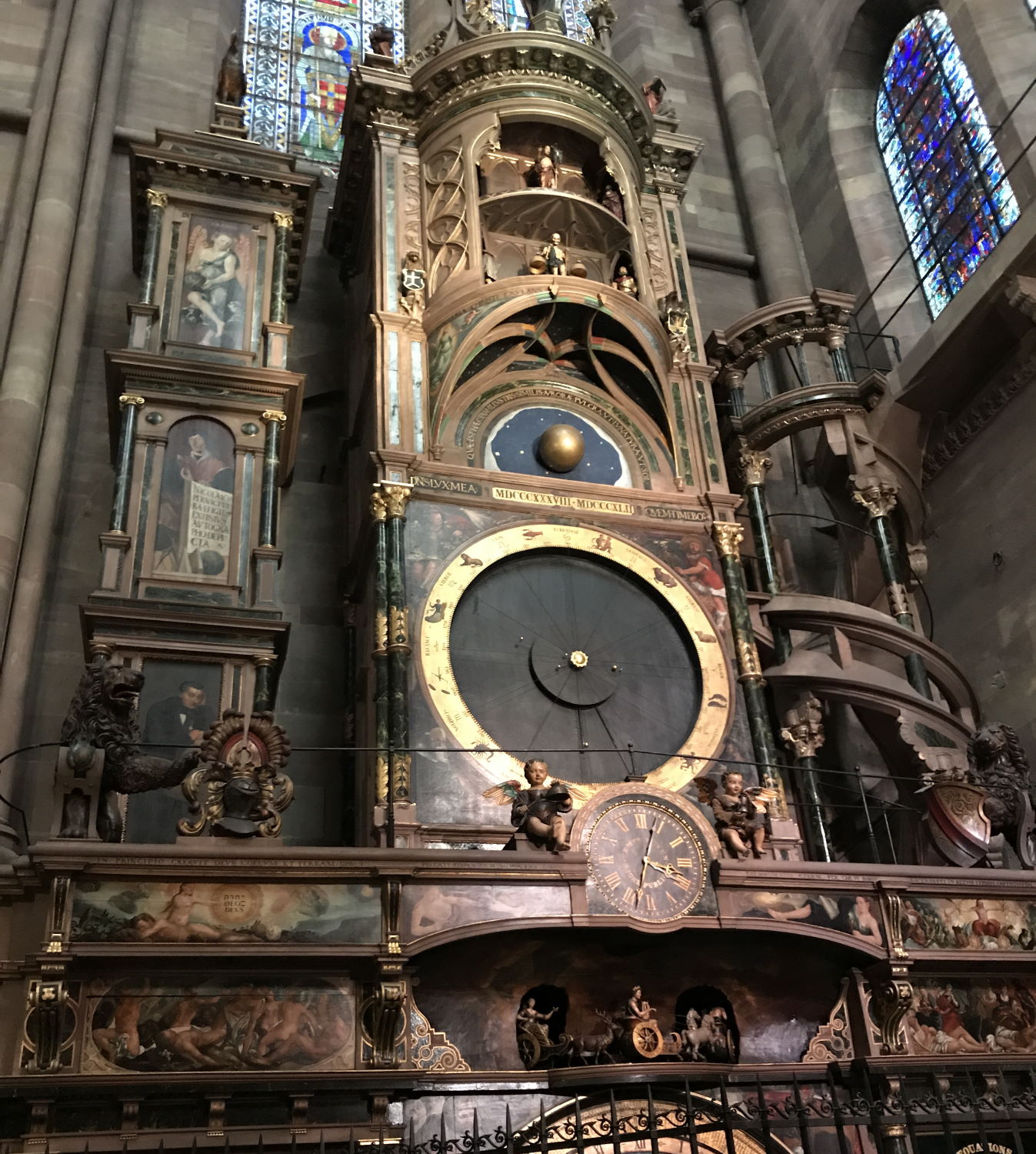
We wandered around the lovely city center area with sights like this:
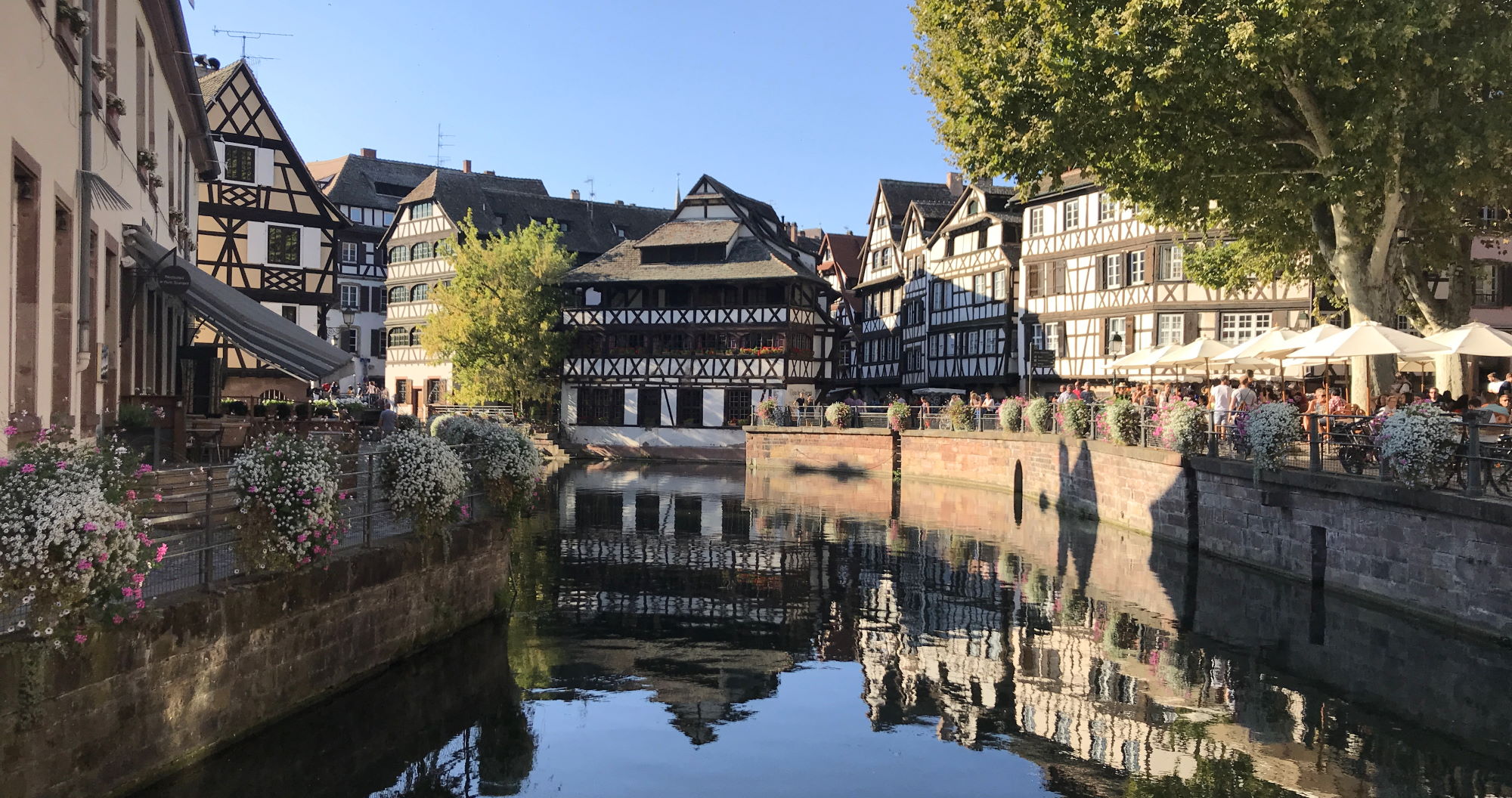
Around this time, one person in our group got his wallet stolen by a group of young women who bumped into him and snatched it from his bag. It was kind of a bummer, but luckily he only lost a few credit cards and some cash, which was reimbursed by insurance. It was a reminder to be vigilant when traveling in tourist-heavy areas in Europe!
Back to Freiburg for More Local Fare
We returned to Freiburg that night and had another must-try German dish, Schnitzel!
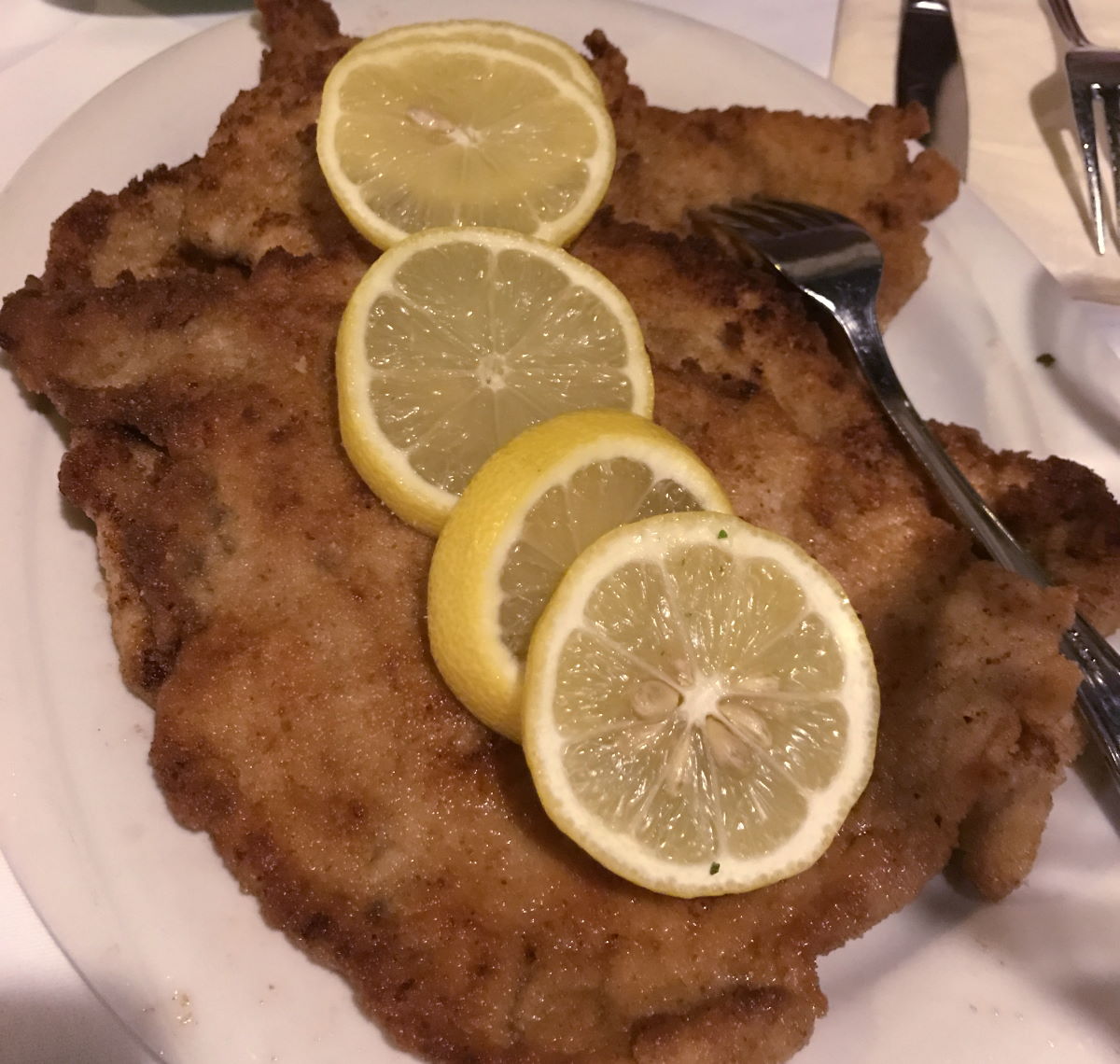
The next morning, we had a breakfast of pastries and quiche. The quiche was always good during our trip (maybe due to the region’s close proximity to France?)

Afterward, we said farewell to Freiburg and took the train up to Stuttgart.
Stuttgart
Stuttgart is seldom mentioned as one of the top tourist destinations in Germany, but it turned out to have some of our favorite attractions, namely, the automotive museums!
We stayed at the Steigenberger Graf Zepplin hotel conveniently located across the street from the train station and adjacent to the city center shopping district. When we got off the train, we dropped off our bags and walked right into the Königstraße (main shopping street).

This shopping district was much bigger than any we had seen up to this point. We spent the whole afternoon exploring. One of the highlights was the Markthalle, an indoor farmer’s market.
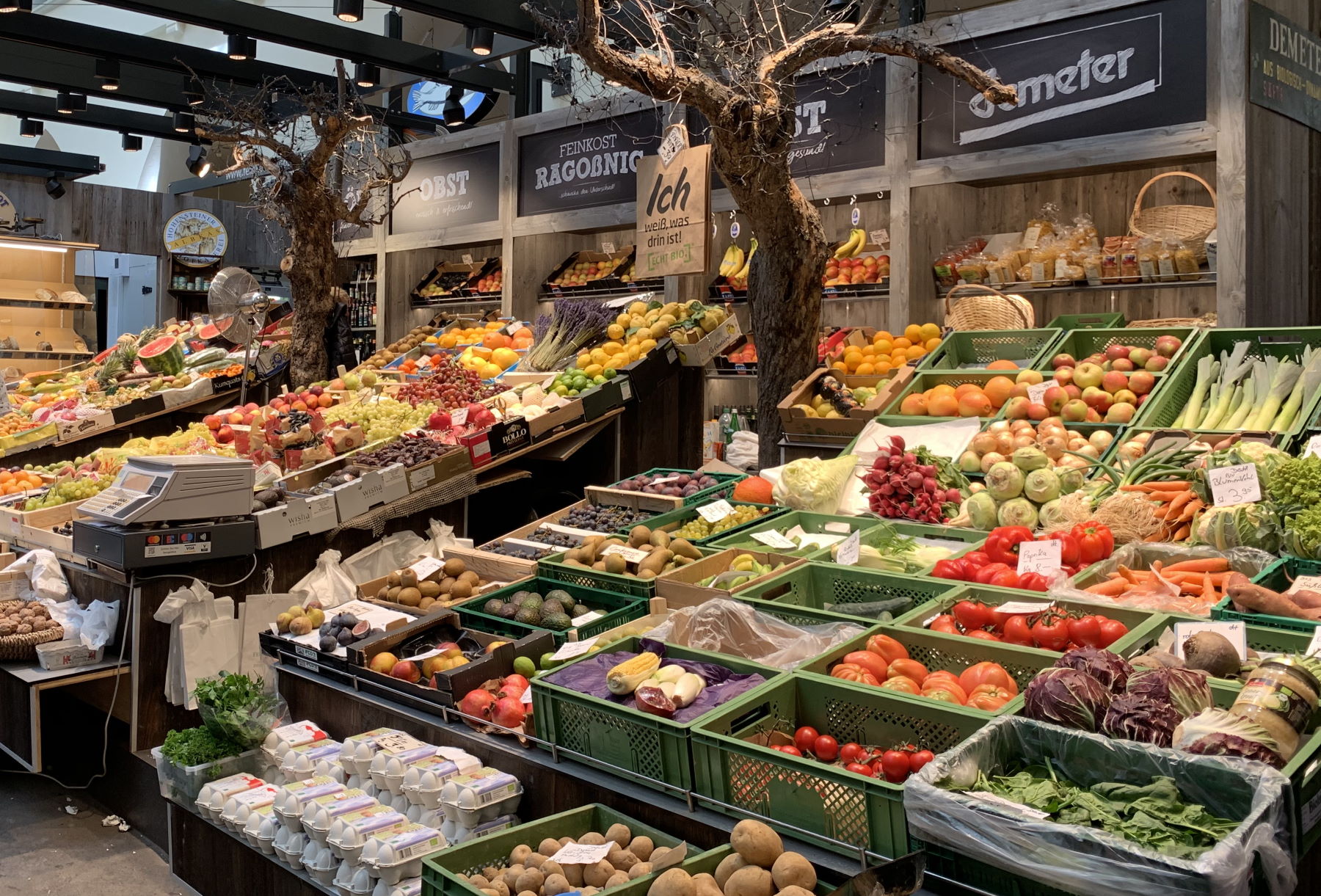
Stuttgart is a major city with several Michelin-starred restaurants, so we decided to splurge and check one out!

The next day, we were on a tight schedule to see the Porsche Museum and the Mercedes Benz Museum. We bought a city local train pass headed out!
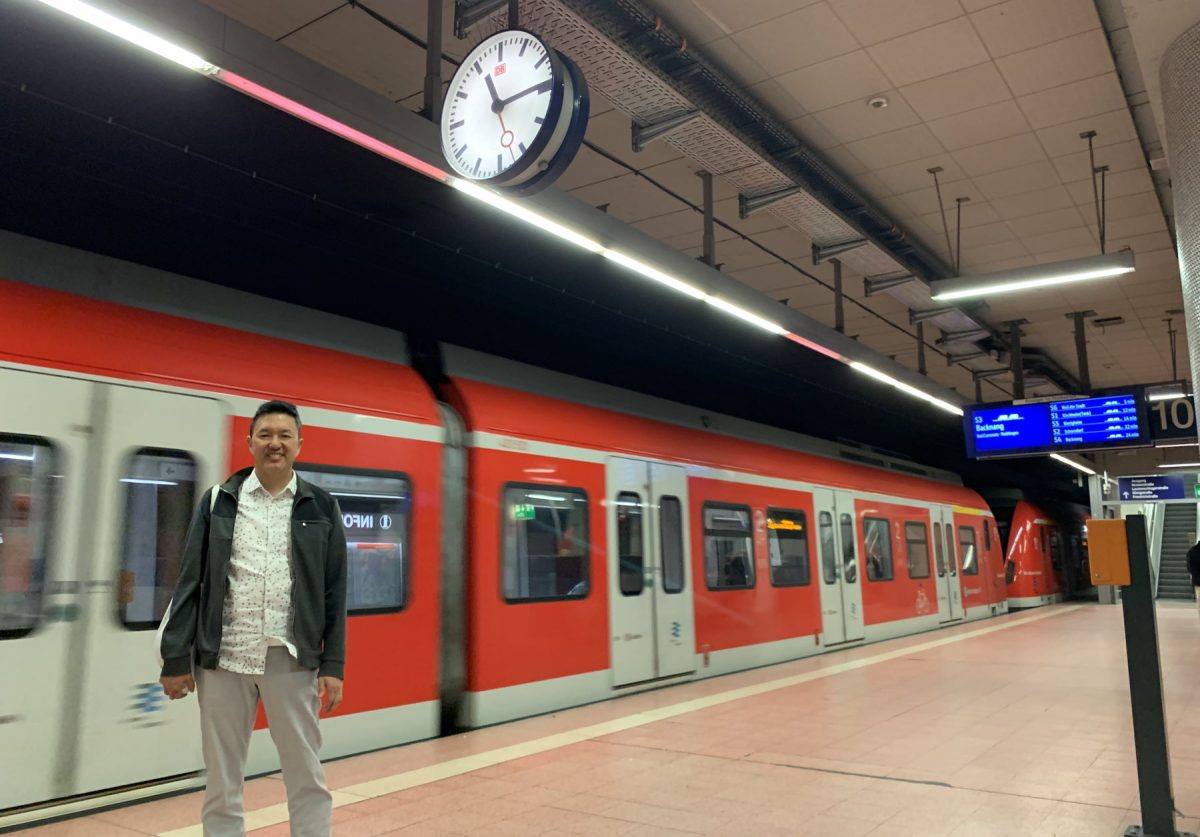
After a short city train ride, we arrived at the Porsche Museum and were blown away at how sleek and modern it was compared to all of the old castles and churches we had been seeing.
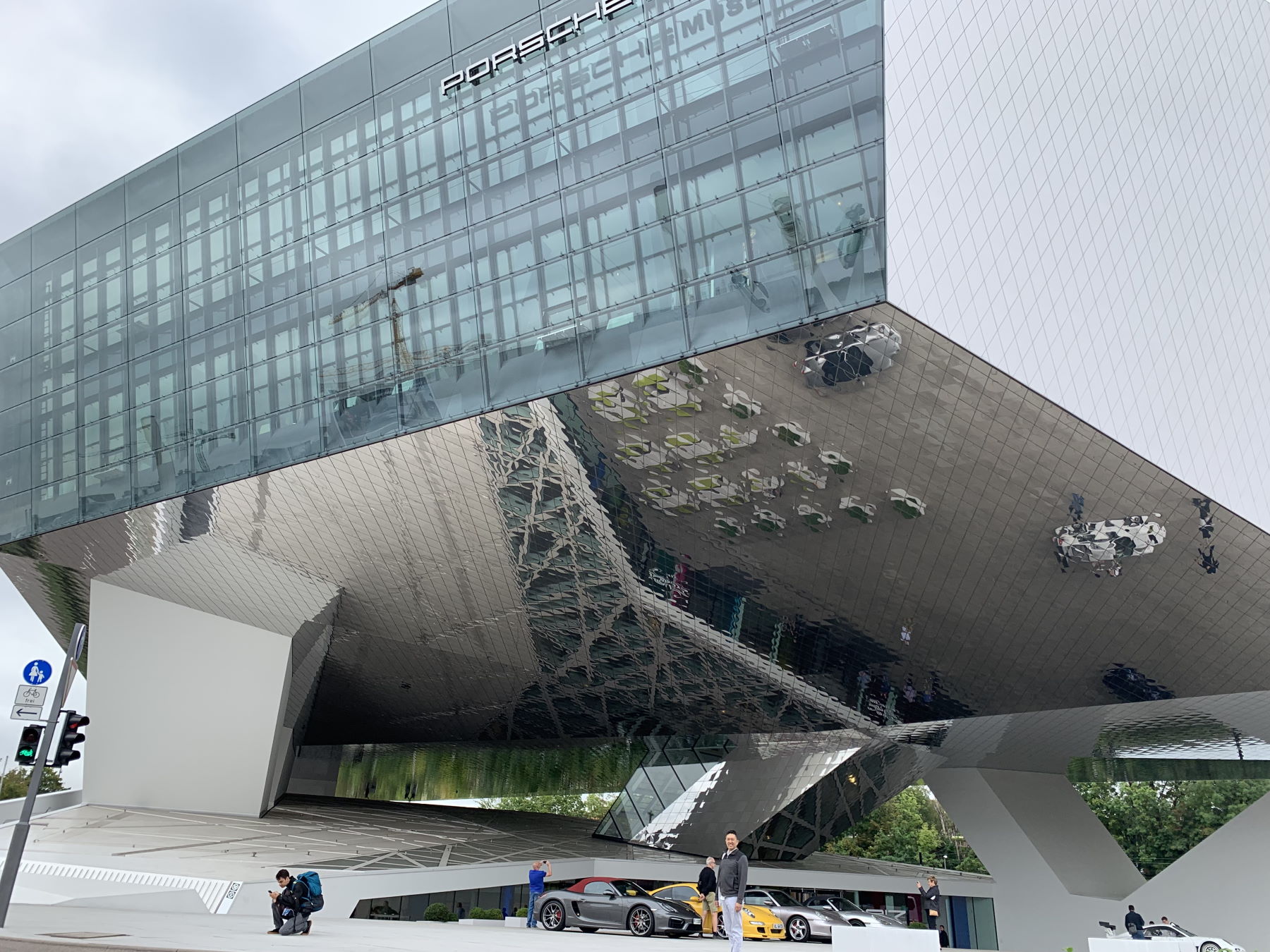
Although the museum covered the history of Ferdinand Porsche from his earliest designs (including the first production hybrid car dating back to 1900!), I’d say the primary focus of the museum was racing.

If we had planned better and had more time, we would have booked a tour of the Porsche Factory. It was sold out when we got there. It requires advance booking and would have been great to see.
Note, if you buy a local city train day pass, you get half off admission to the Porsche museum!
As impressive as the Porsche Museum was, we were totally blown away by the Mercedes Benz Museum. To get there, we took the train back to the Hauptbahnhof, then a bus to the museum.
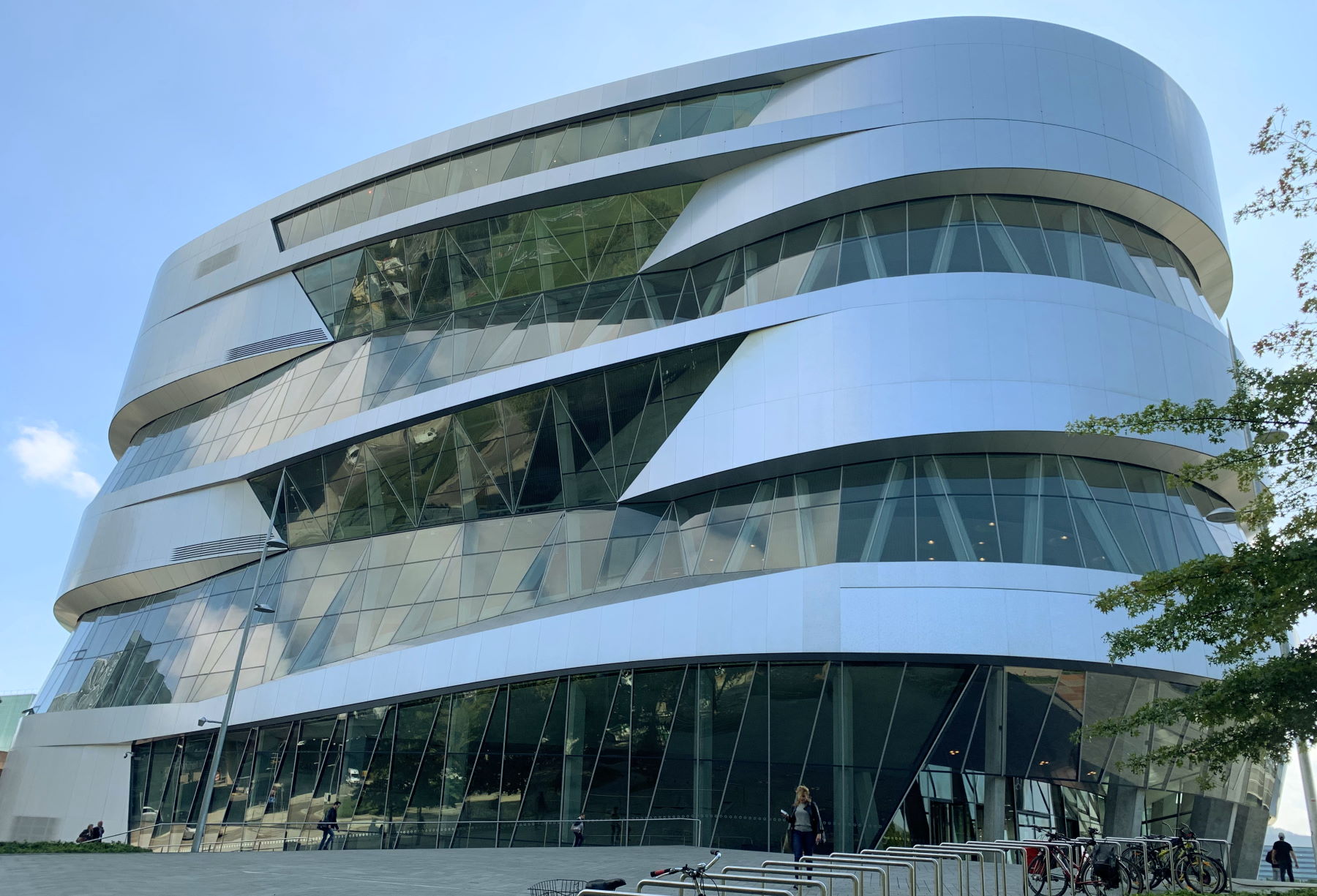
The Mercedes-Benz Museum is housed in an ultra-modern eight-story high building. After you buy your ticket on the ground floor, you take an elevator to the top where the exhibit begins with the invention of the automobile. The levels spiral downward gradually and take you forward in time showing innovations in automobile design. The continuous spiral ensures that you see the entire exhibit without missing anything.
Whereas the Porsche museum has an emphasis on racing, I’d say the Mercedes-Benz museum has an emphasis on history. After all, Karl Benz is credited with inventing the automobile.
Along the outer wall of the museum are panels representing major historical, scientific, and artistic events such as the outbreak of World War II, the Beatles coming to America, and the moon landing. These were very interesting and well-done.
Even if you don’t have much interest in cars, I’d highly recommend the Mercedes-Benz museum in Stuttgart! We were definitely blown away by it!
With not nearly enough time to explore the other museums and attractions in Stuttgart, we had to make our way back to Frankfurt for our last night in Germany.
Frankfurt
From Stuttgart, we took a one-and-a-half-hour train ride back to Frankfurt, where our trip began. From the train station, we took a short cab ride to our hotel at the edge of the city center, the Innenstadt. As with all of the other German cities we visited, this was a vibrant outdoor shopping area.
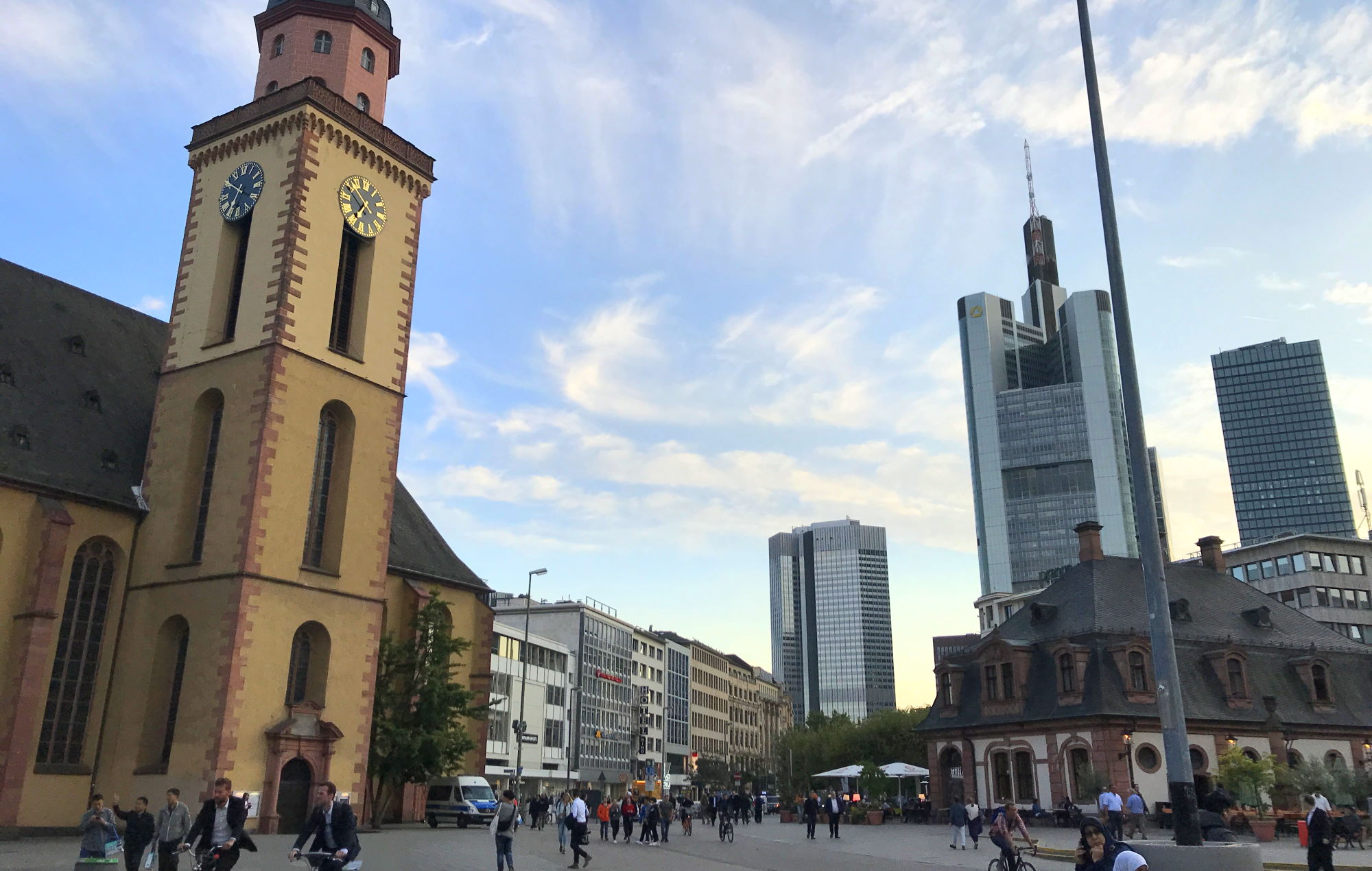
To the south was the Altstadt, with cobblestone streets and old German-style buildings that we had become accustomed to by now.
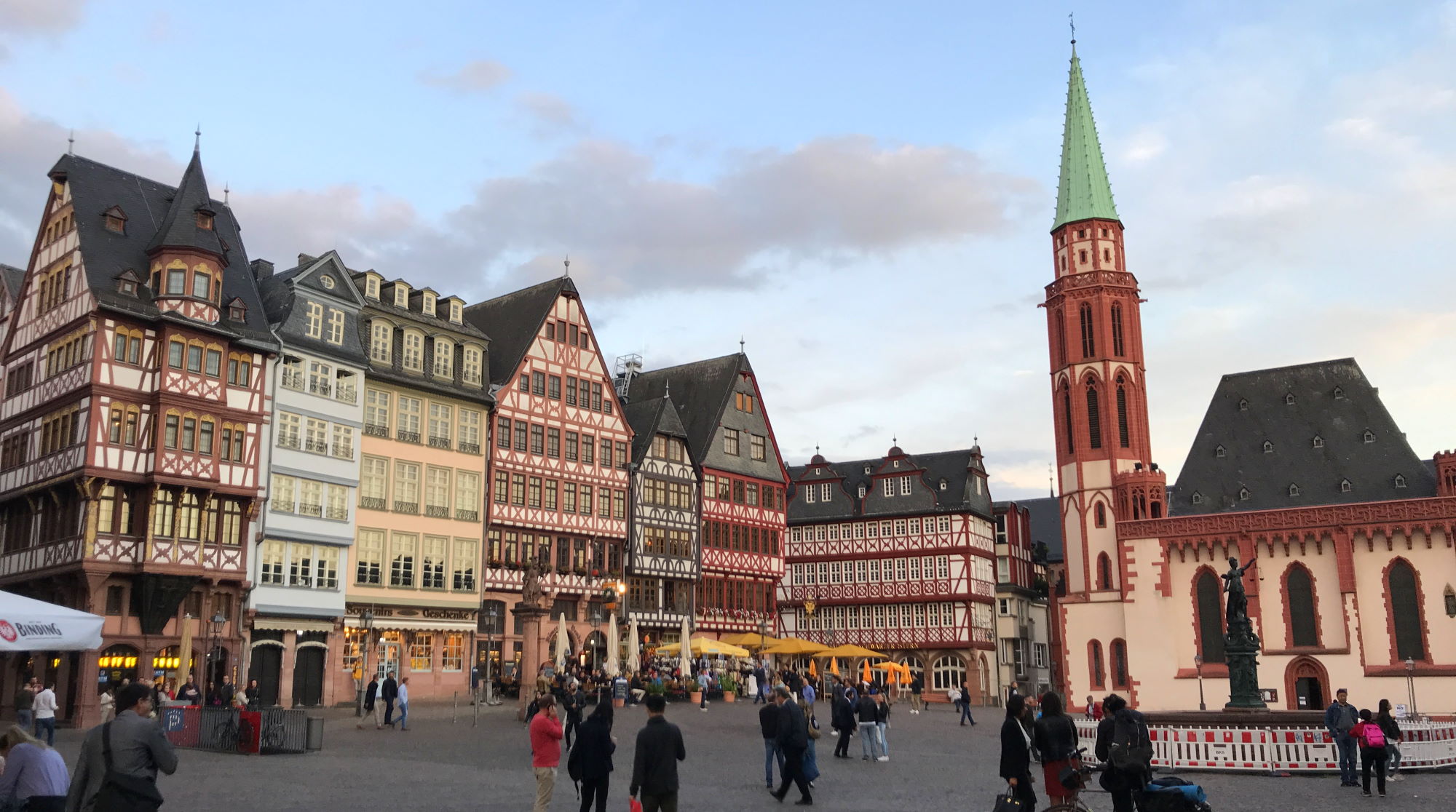
But much of Frankfurt is super modern, with skyscrapers and busy city streets. Spending only an afternoon there definitely did not do it justice.
But, we had one of our favorite dinners there, at Quattro Ristorante Italiano in a quiet side street off the main shopping district. This highly-rated restaurant had a super charming ambiance that made it an ideal date night to end our trip. The food was excellent as well!
Summary
So, even though our trip did not take us to some of the most popular tourist destinations in Germany, we still had a wonderful time and we found some really cool sights that were unlike anything in the United States.
We found the German people to be very friendly, contrary to stereotypes, and we enjoyed practicing the tiny bit of German that we learned before departing (we took eight weeks of classes). We definitely would like to return to this wonderful country someday!
Did you ever visit these cities in Germany? What did you think? Any questions? Leave a comment below! – Brian

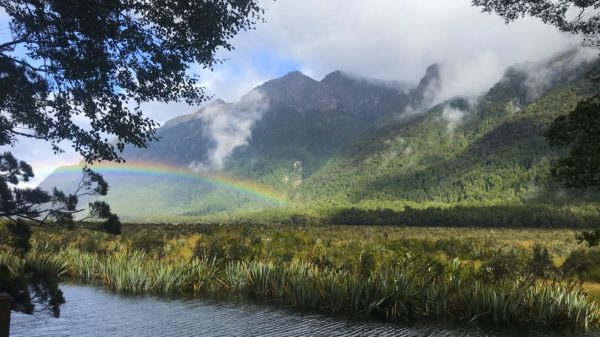
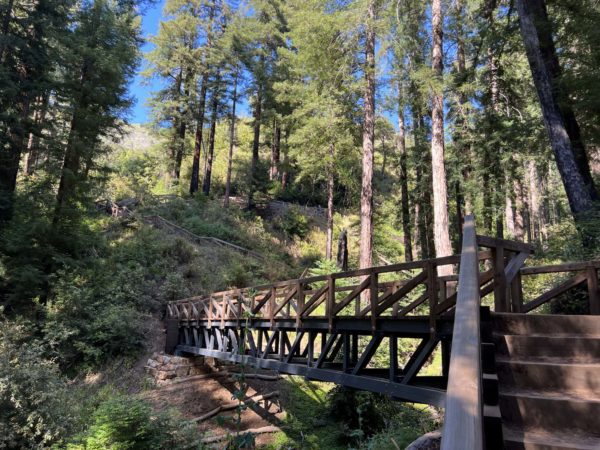
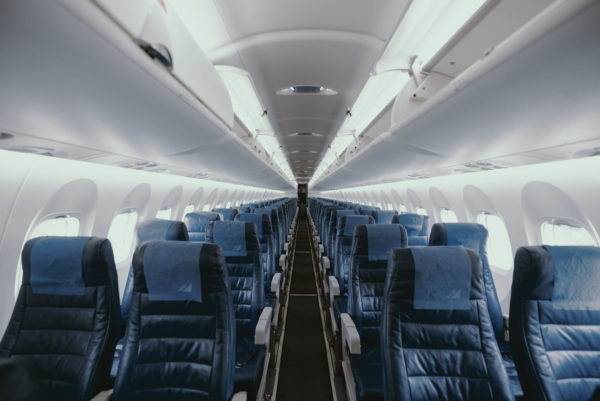
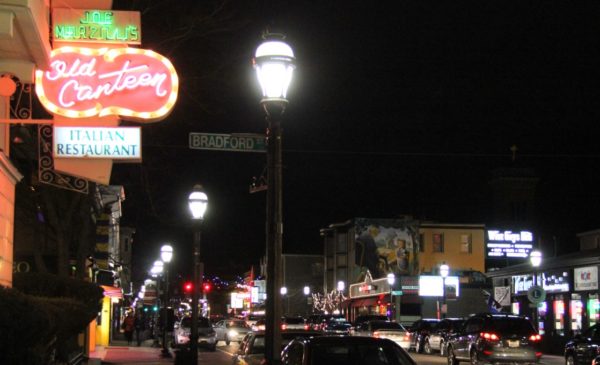
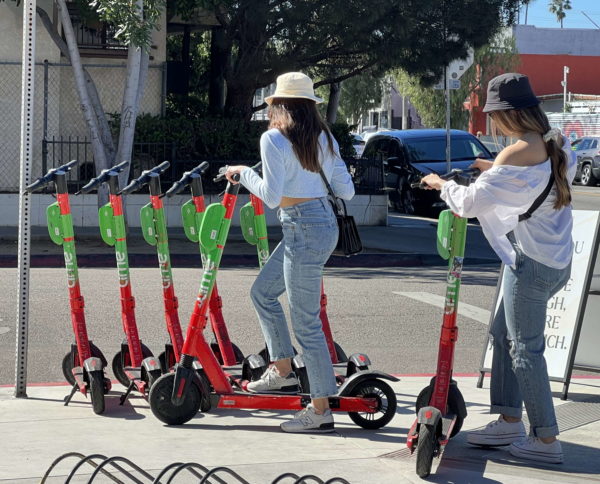
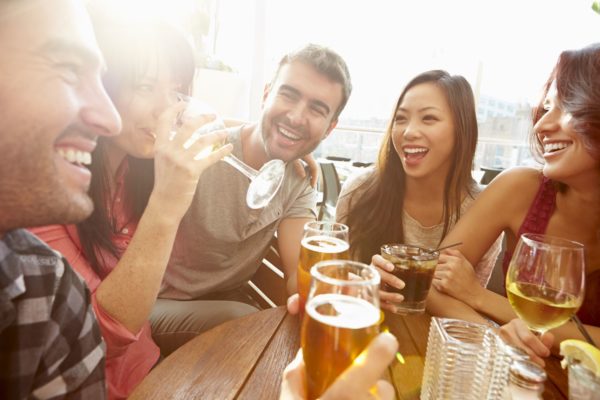
Please Leave a Question or Comment
I try to answer each one! - Brian